Iran Part 7: From Isfahan over the mountains to Kashan
Traditional merchant houses in the city of roses (44)
After a week in Isfahan with many nice encounters we move on. Our next destination is the city of Kashan and we ask in our hostel about the best travel route. Because we have a problem: On our way there is the nuclear facility Natanz and you are only allowed to drive on the highway in this area and not on side roads, otherwise you run the risk that the police stops you and takes you to the police station. We decide to take a detour on the other side of the mountains and quickly realize; that was not a good choice. We end up on the main truck route and are surrounded by polluted air the whole day. It’s frustrating, ugly and then it starts to rain. We briefly consider hitchhiking all the way to Kashan. But we also don't feel like waiting in the rain until someone gives us a ride. Hopefully things look brighter tomorrow. We drag our bikes up a hill and find a hidden place to spend the night, far enough away from the traffic noise.
Our mood isn’t better the next day and the thought of cycling another 70 km along this road isn’t motivating. We decide to cycle through the mountains instead. Even though the sky is getting darker and darker, we enjoy being out in nature and away from the traffic and the pollution.
We stop in the village Kamu to buy some food for dinner. We start cycling again but are soon stopped by Mehrdad. He’s telling us that it would start raining soon and that we won’t make it over the pass before nightfall. He invites us to stay with him instead and we accept his kind invitation. Mehrdad is renovating his grandparents' house in the small village of Kamu and runs a ceramics store in the bazaar of Kashan. In the evening his friends come over and we cook pasta for all of them and spend a nice evening together. Definitely better than camping in the rain.
A story that could only happen in Iran
This turns out to be a morning that could only happen in Iran. After a hearty breakfast we continue our way over the mountains, but shortly after our departure we are stopped. A guy with an ice cream truck drives by and give us some banana ice cream. At this point we probably have to mention briefly that the flavor banana seems to be extremely popular in Iran and there are also banana chewing gums sold everywhere. Guess we’re eating banana ice cream at 10 am then.
We should know it better, but we forgot that a longer stop in Iran can automatically lead to further invitations. Shortly after the ice-cream-man, another one stops. This time a musician from the next village. He is single and would like to invite us for lunch. We decline his invitation, but talk to him a bit more and then he suddenly unpacks his instruments one by one, takes out a chair from the trunk and starts playing for us. Tales of the Road.
Historic merchant houses and beautiful caravanserais in Kashan
Kashan (population about 300,000) is our last historic city along the main tourist route. We check into the beautiful traditional guesthouse Ferdows Khoosk, lovingly run by Narges and Ramin. Our guesthouse is located in the middle of the winding old town streets of Kashan and will be our base for the next three nights. The young owner couple has just reopened the accommodation and they were on the road in winter with their car, selling clothes and spending the night in the car. During our trip we meet quite a few Iranians who plan on converting a bus or camper to explore their country. A way of life that we know only too well from our friends in Switzerland, where many are busy converting campervans for traveling. The dreams between East and West are sometimes not that different.
We make the first explorations in the old town, which with its adobe houses, a yakhchal (ice house), mosques and windcatchers reminds us of a smaller edition of Yazd. Again and again, we pass entrances for qanats and we can fill up our water everywhere. What strikes us immediately is the unique architecture in the desert city of Kashan. Many houses were built one floor lower than the street and stairs lead to sunken courtyards, which provides more shade and cooling in the hot summer months.
This can be seen particularly well in the 18th century Agha Bozorg Mosque. Upon entrance through the front doors you will first notice a beautiful sunken courtyard below the domed mosque in the back. Two windcatchers additionally cool the mosque. It’s a wonderful place to linger and some locals sit in the mosque enjoying the atmosphere.
The historic old town of Kashan can easily be explored in a few hours and we realize we’re a bit saturated from sightseeing. In the last weeks we’ve explored all the classic cities of a typical Iran trip with Shiraz, Isfahan and Yazd and somehow it’s hard for us to get into the mood for discovering Kashan. Perhaps it’s travel fatigue and maybe we’ve seen too many mosques, caravanserais and bazaars lately? We feel a little guilty towards Kashan as this small city with is traditional houses and lively bazaar has much to offer and is usually one of the favorite cities of travelers. We decide to take it slower than usual and just do sightseeing for half a day and then relax the rest of the day in the guesthouse.
Kashan is located between the mountains and the desert and is known for the cultivation of roses, from which fragrant rose water is obtained. The rose water is used for food, as massage oil, as face lotion or perfume. Everywhere on the roadside and in the stores you can buy rose water and it just smells amazing.
Kashan is also known for its beautifully restored 19th century merchants' houses, which have been converted over the centuries by wealthy carpet merchants into pompous residential complexes. These houses often appear inconspicuous from the outside so as not to attract thieves. Only a small dark staircase leads down to a courtyard and suddenly you are standing in the middle of a palace, surrounded by rippling water, pomegranate trees and richly decorated rooms, where the sunlight through the windows paints colorful lights on the floor.
We visit two of the historic houses. The famous Tabatabai House was built in the 1880s by the influential Tabatabai family and excellently reflects the lifestyle of wealthy families of Kashan. The house has a total of 40 rooms and is arranged around four courtyards, the largest of which boasts a large pond, helping to keep the courtyard cool. On the walls you can see intricate stone reliefs and delicate stucco.
The wealthy merchant Boroujerdi fell in love with the daughter of Mr. Tabatabai, but the condition for the marriage was, that he would build a residence as good as the Tabatabai House. The construction took him 18 years and 150 craftsmen – no wonder it’s one of the most impressive buildings of the city. Maybe by then he thought it would’ve been easier to have fallen in love with another woman?
Both houses are very imposing and although there are a lot of visitors on the weekend, we can enjoy it and are fascinated by all the sumptuous decorations and the fine glass and mirror work.
In the afternoon we head to the bazaar to meet Merhdad in his ceramic store. And as soon as we take the first turn in the covered bazaar, it suddenly happens: Kashan enchants us after all. We find ourselves in the Amin al-Dowleh Timche caravanserai with its richly decorated dome. In the 150-year-old caravanserai there are handicraft workshops and carpet sellers, because Kashan is world-famous for its carpets. The atmosphere in this caravanserai is simply magical and suddenly we feel like exploring again. We stroll through the historic bazaar, where trade has been going on for as long as 800 years. Over the centuries, the building was expanded again and again and today it’s one of the oldest continuously used markets in the world (another bazaar superlative).
We take another turn and end up in a quiet caravanserai, where not many stores have moved in yet. In one corner Mehrdad has his small ceramic studio and shop. A couple of young women from Tehran are working here and moved to Kashan to pursue their art. They appreciate the relaxed atmosphere of the city and that they have a better work-life balance than in busy Tehran. Mehrdad takes a short break and shows us his bazaar and leads us into an inconspicuous side alley to the wool dyers' quarter. The Kashan wool is dyed using both synthetic and natural dyes and hangs out to dry. The coloring of the wool requires skill and experience to attain a correct shade. Afterwards the weaving of rugs is done both in-home and at workshops with employed weavers. It’s fascinating to learn how many steps are involved in creating a Persian carpet. In a gallery we get to see the different styles of carpets and are surprised that you could buy a carpet for only a few hundred euros. It seems very cheap in our perspective considering all the different manual steps and working hours involved.
On the next day, we visit Fin Garden, one of the oldest gardens in Iran and another UNESCO World Heritage Site. The delightful garden with its symmetrical proportions, old cedars, spring-fed pools and fountains was designed for Shah Abbas I in the 16th century. A series of pools and fountains are filled with mountain water through a qanat. The highlight is a pavilion, where the water runs through the middle of the ground floor. It’s a long weekend and the garden is crowded with visitors taking selfies. We watch a family and are surprised when we see that the girl took her bird to the garden. We wonder if the bird has any opinion on Persian gardens.
Visiting the red village Abyaneh
On our last day we take a cab to the historic mountain village of Abyaneh, which is located at an altitude of 2300 m and only one hour south of Kashan. It’s not the ideal weather though with some rain and dark clouds. Abyaneh and Masuleh in Gilan Province are probably the most famous mountain villages in Iran. Therefore, we expect a village that is completely dedicated to tourism and are surprised how authentic Abyaneh still seems. The village is estimated to be 1500 years old and considered one of the oldest settlements on the edge of the Iran desert plain. The first thing that impresses us as we enter the village are the red houses that are made of red clay with white arches and wooden lattice windows. Due to the red color of this soil the village is known as the Red Village of Iran. It’s a pleasure to walk aimlessly through the alleys of the red village and look at the special architecture of the houses.
The trunk of a car in the middle of the alley serves as a supermarket and the women passing by are still wearing traditional dresses with rose patterned scarfs and wide skirts. Small stores sell dried fruits and traditional clothes, and there are a handful of small cafes. As beautiful as the village is, there aren’t many professional opportunities here and the houses are mostly used as vacation homes, as the residents have migrated to cities and only come back on vacation to enjoy the fresh air and quiet country life here.
Even though Kashan enchanted us in the end, we’re looking forward to cycle more and be out in nature again. We miss lush sceneries with forests and mountains and decide to spend the next weeks exploring the west of the country and cycling through the lesser-visited provinces of Lorestan and Kurdistan. We’ll be escorted by the police, find the Grand Canyon of Iran and archaic mountain villages and a new friendship. More about that in our next blogs.

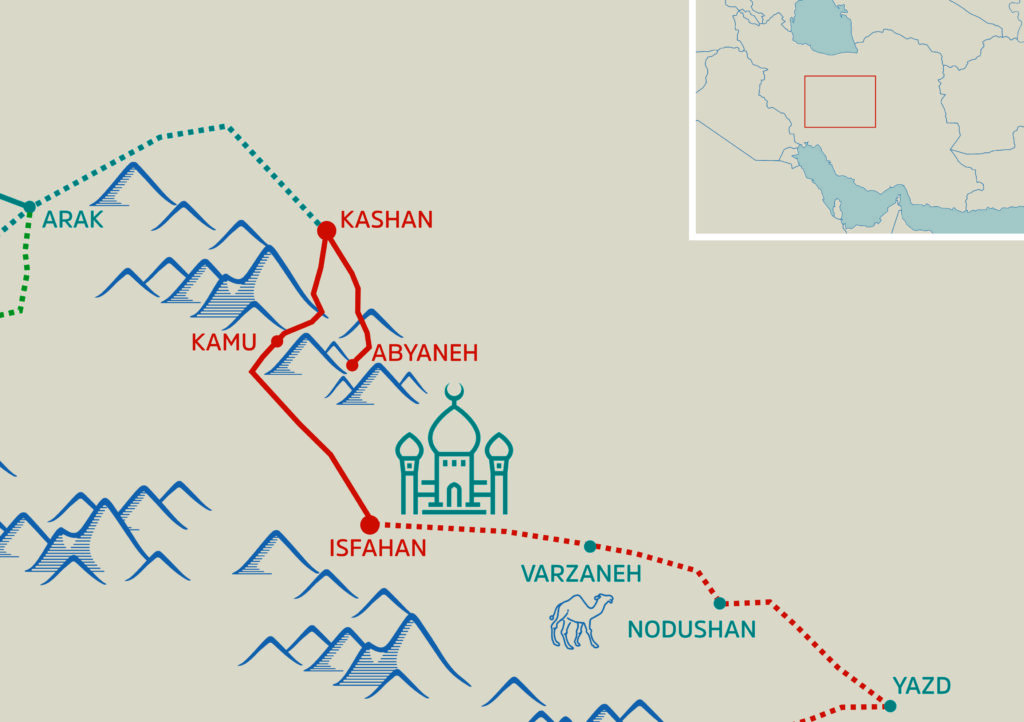
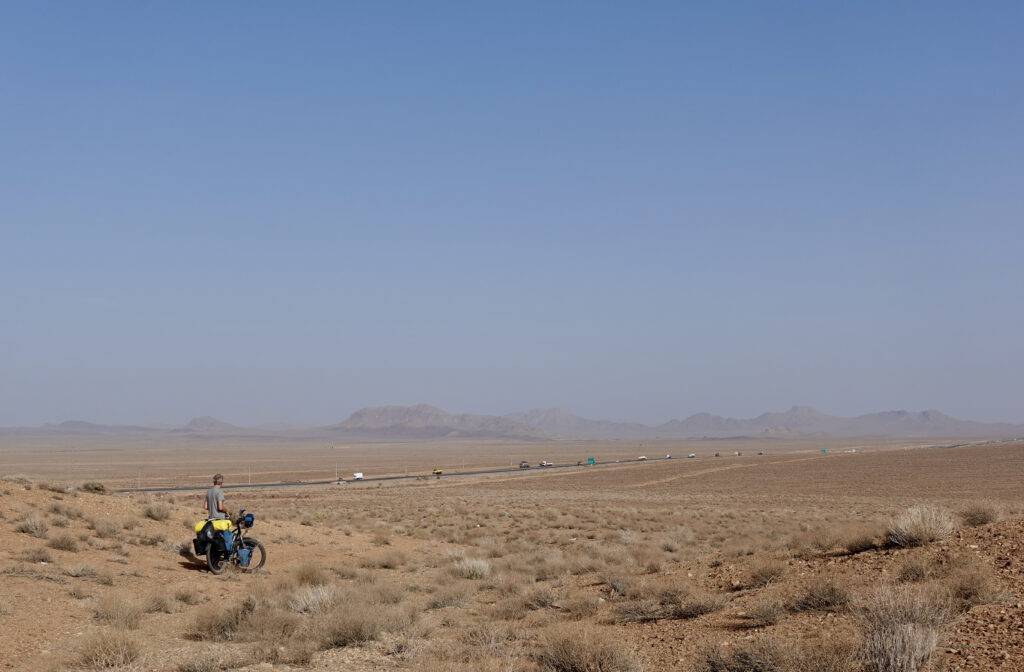
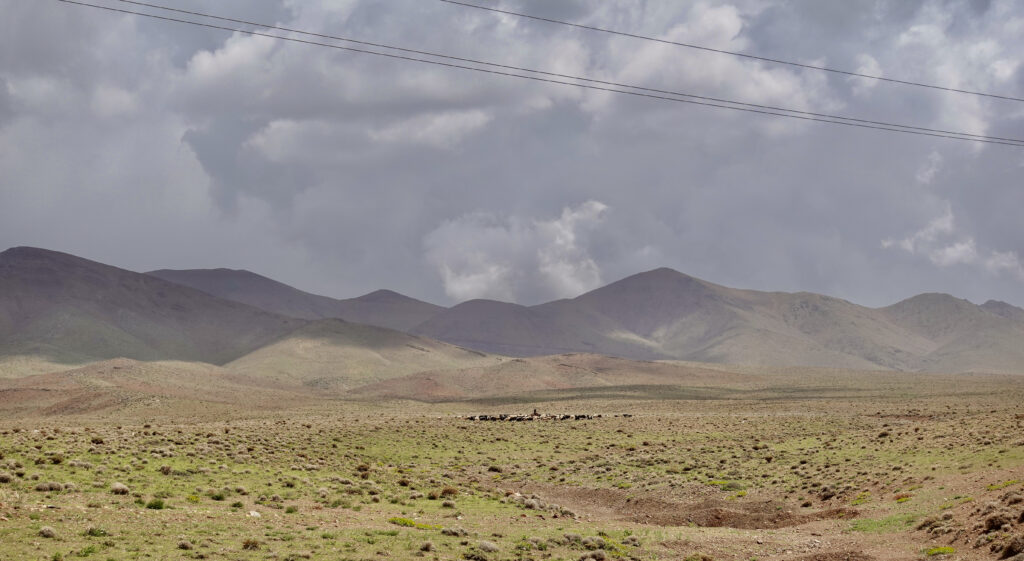
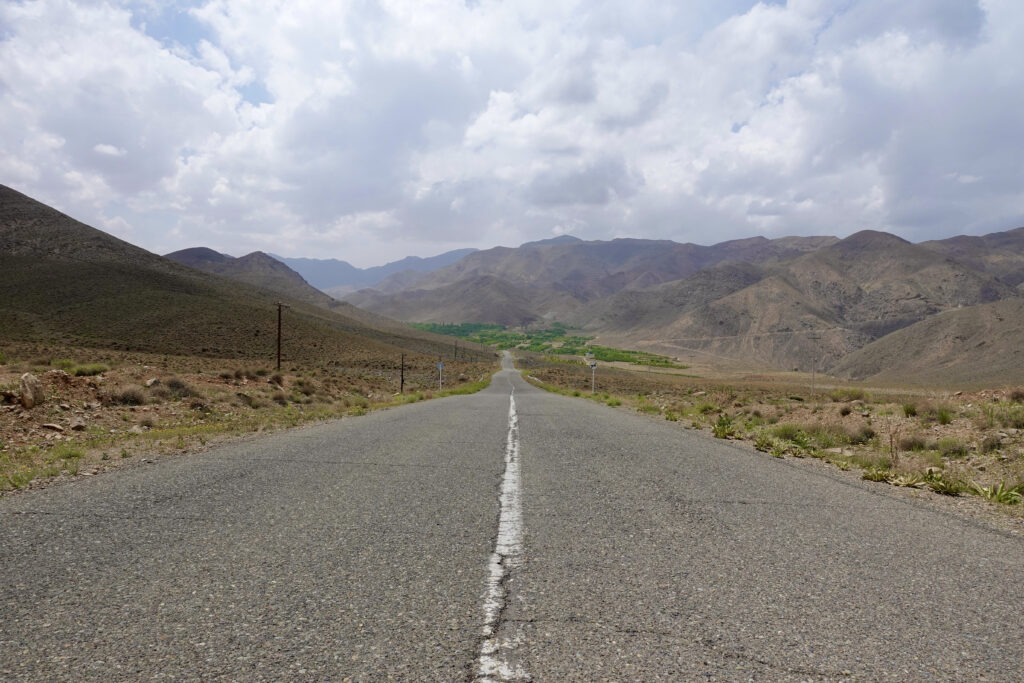
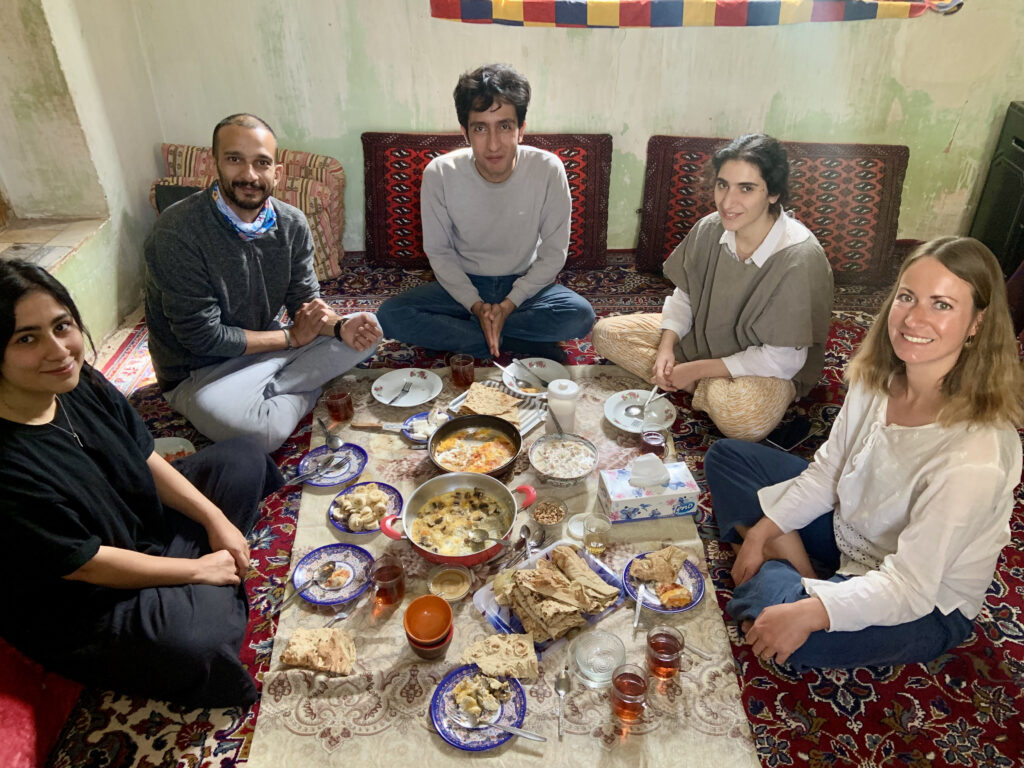
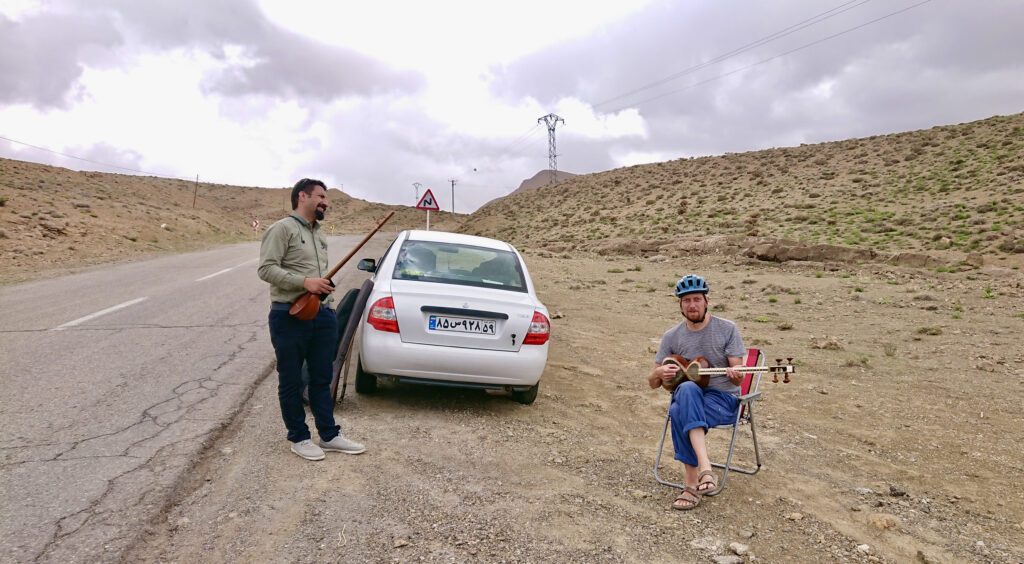

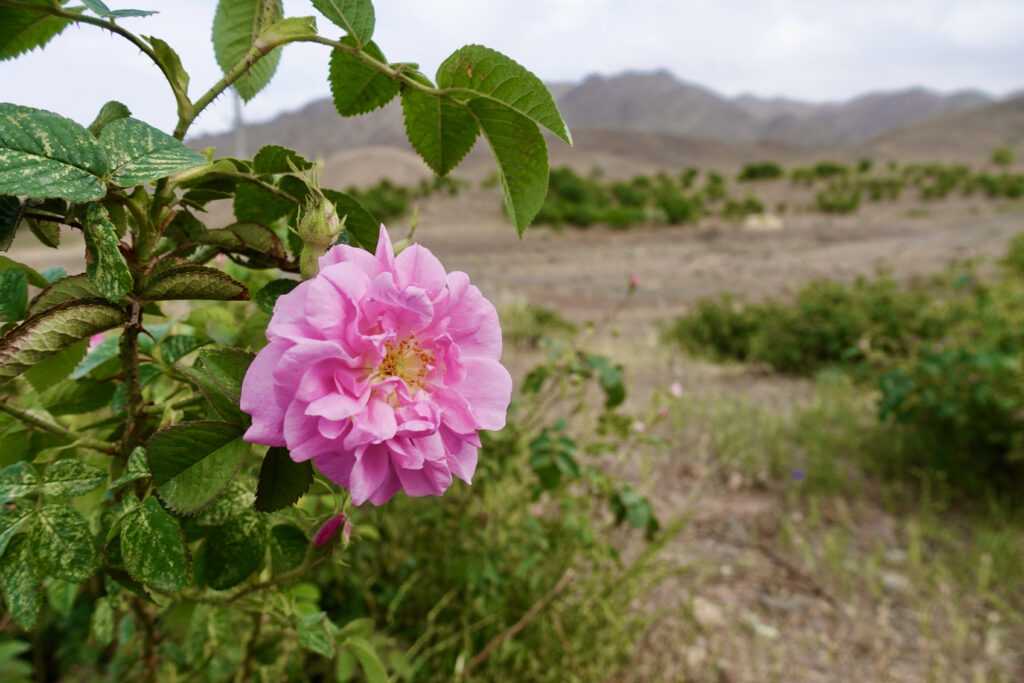
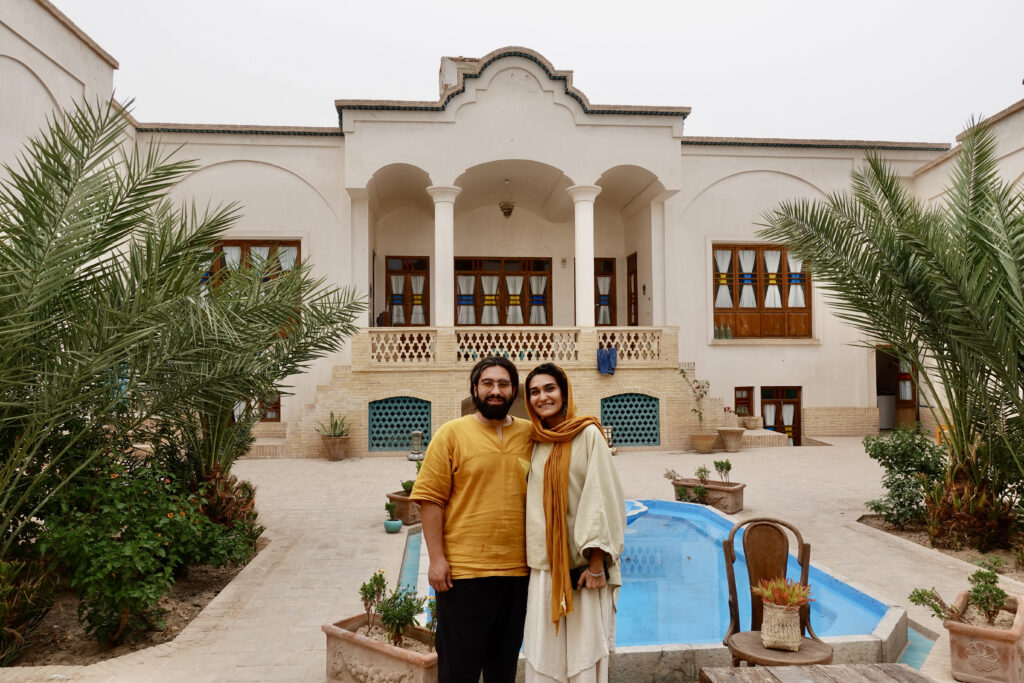
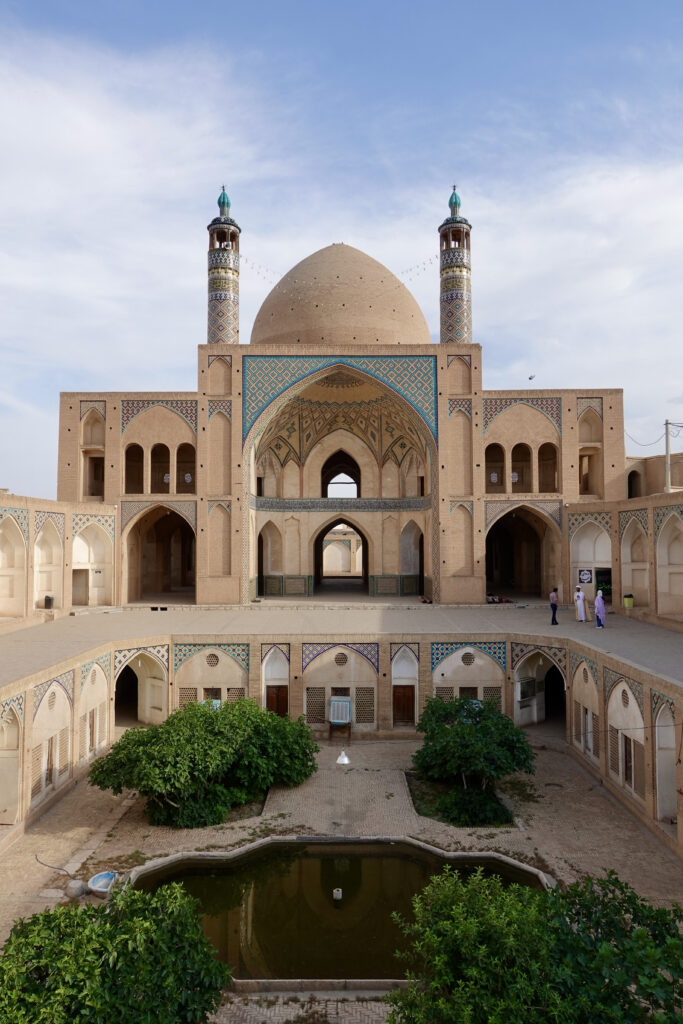
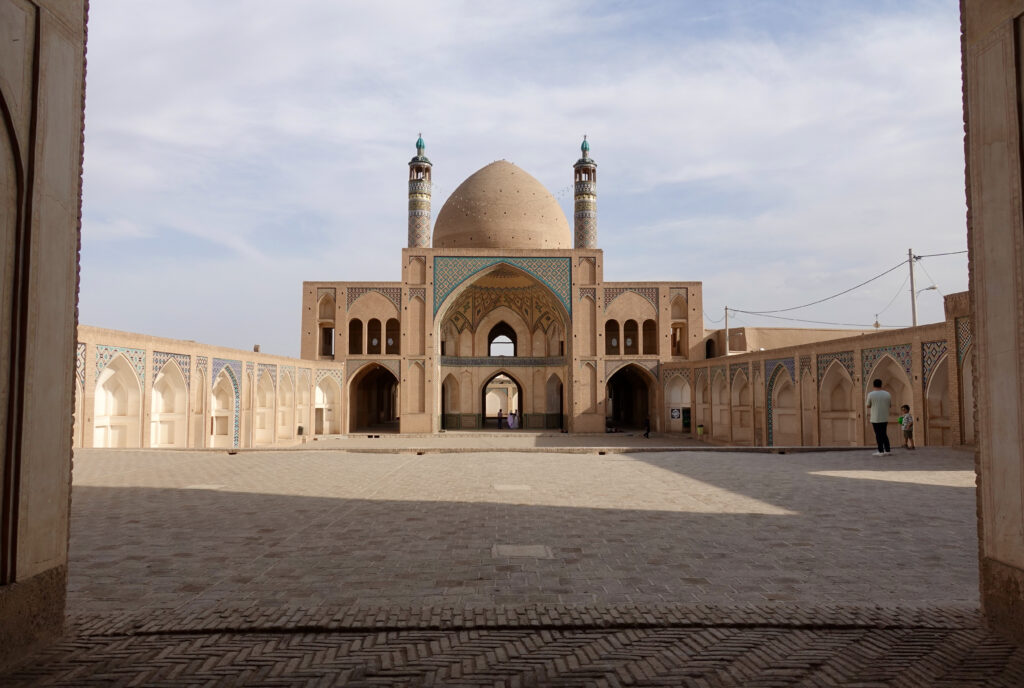
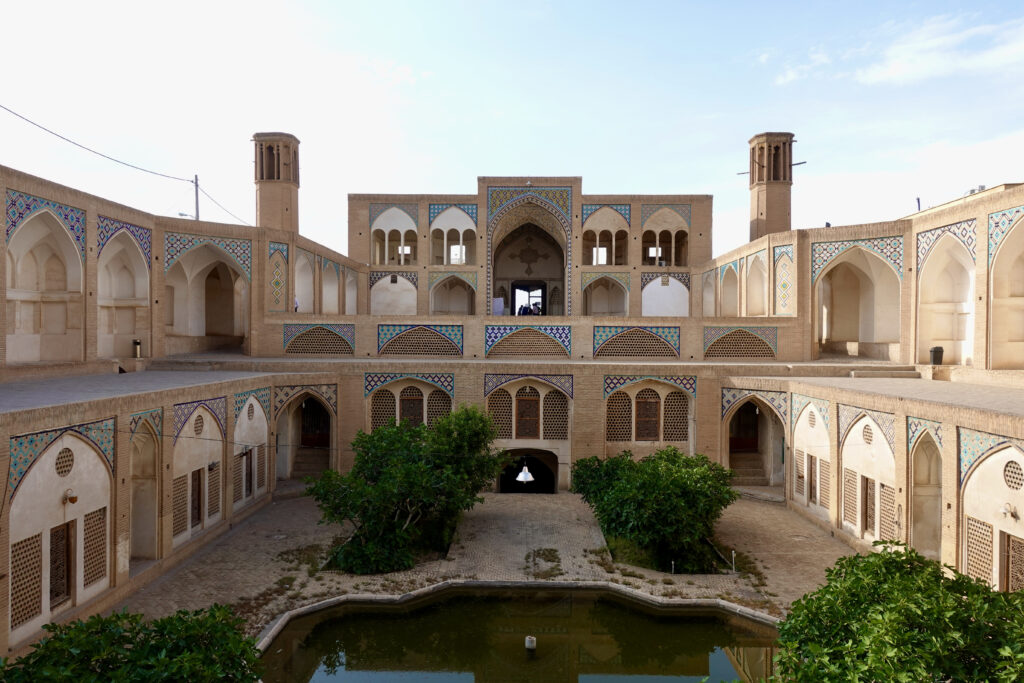
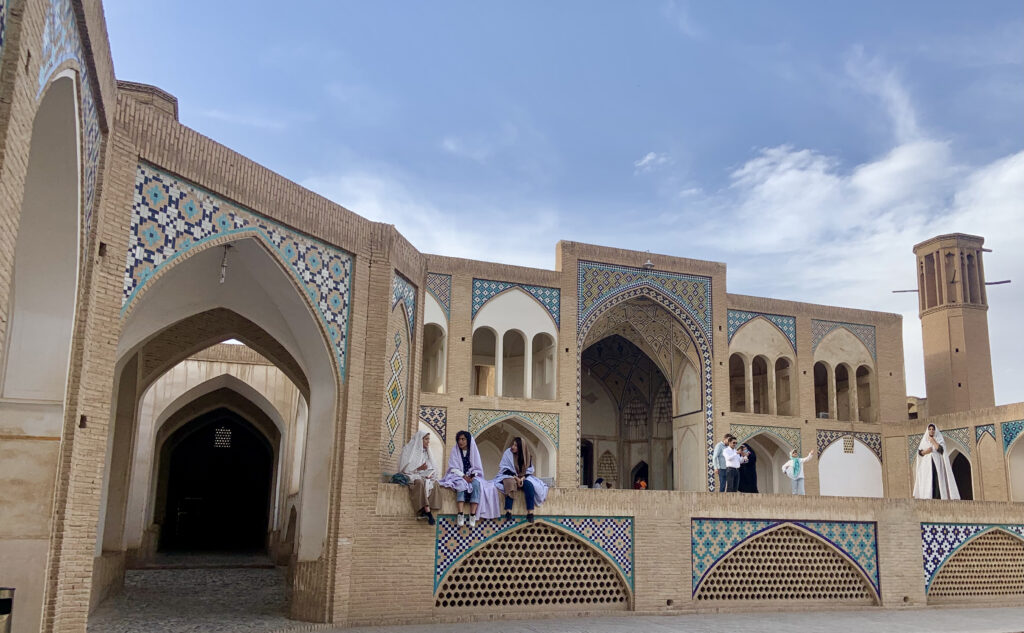
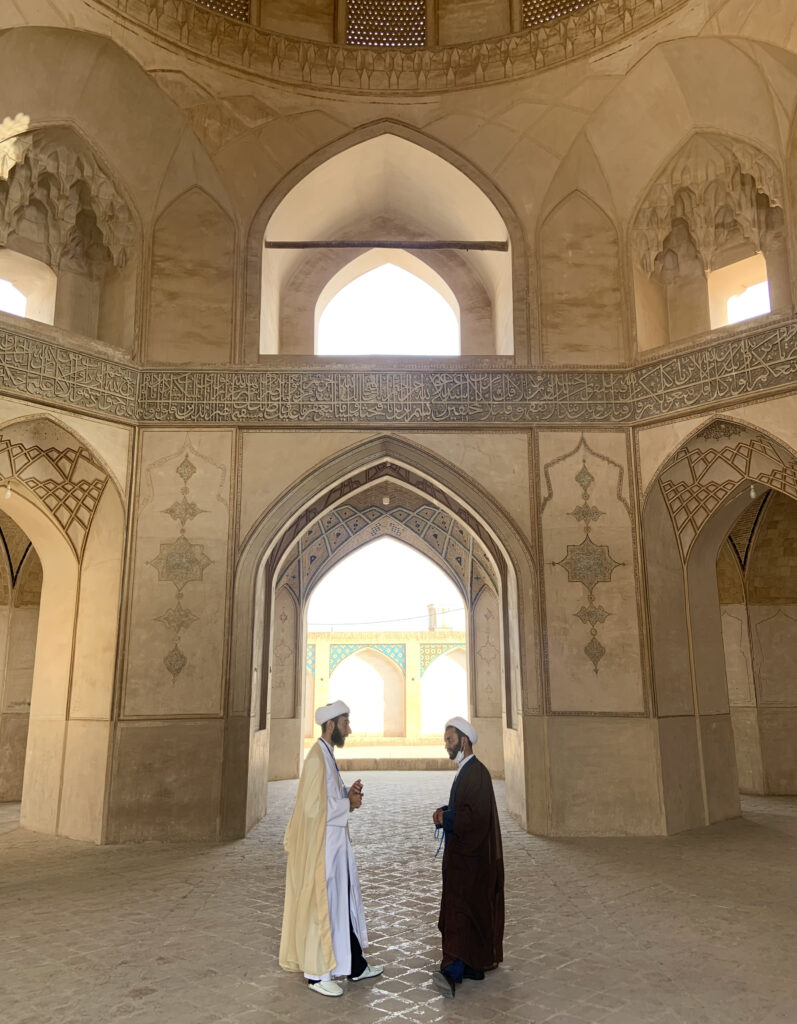




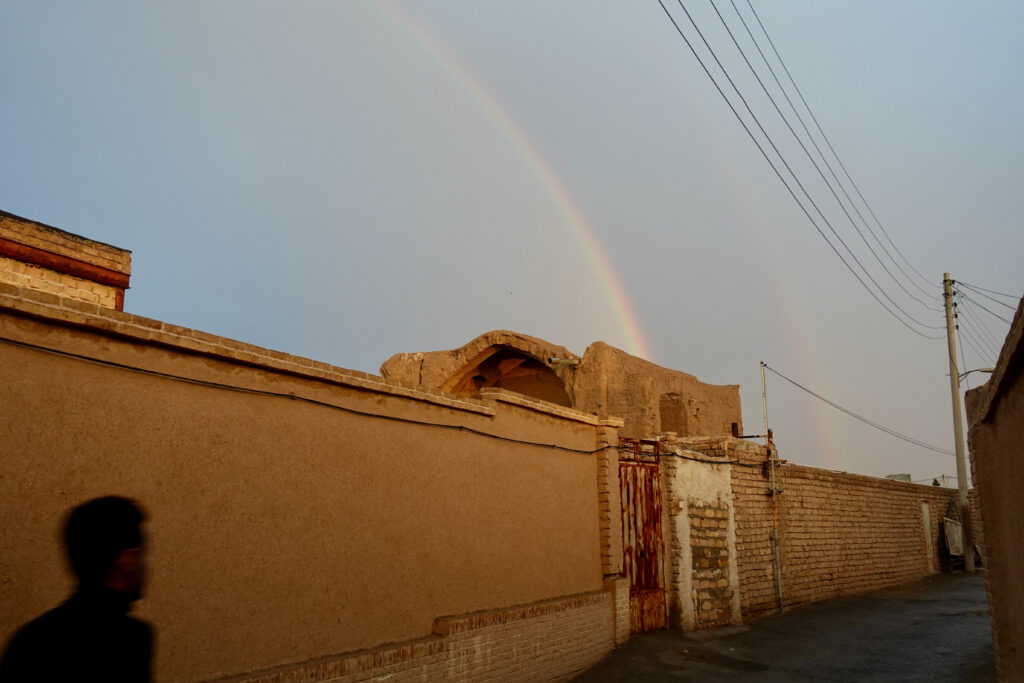
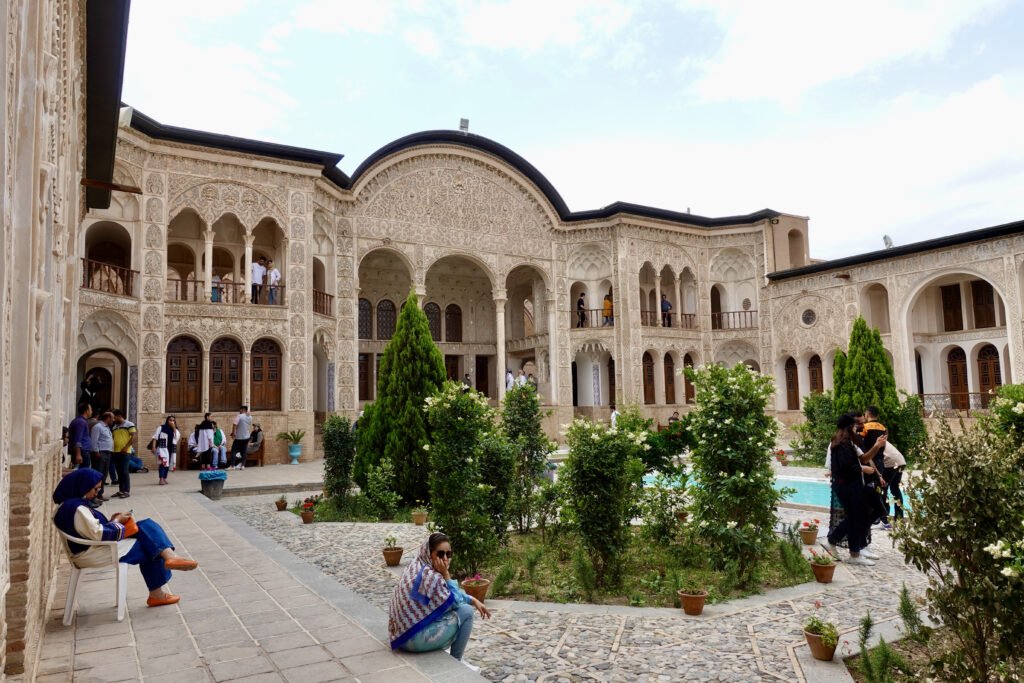
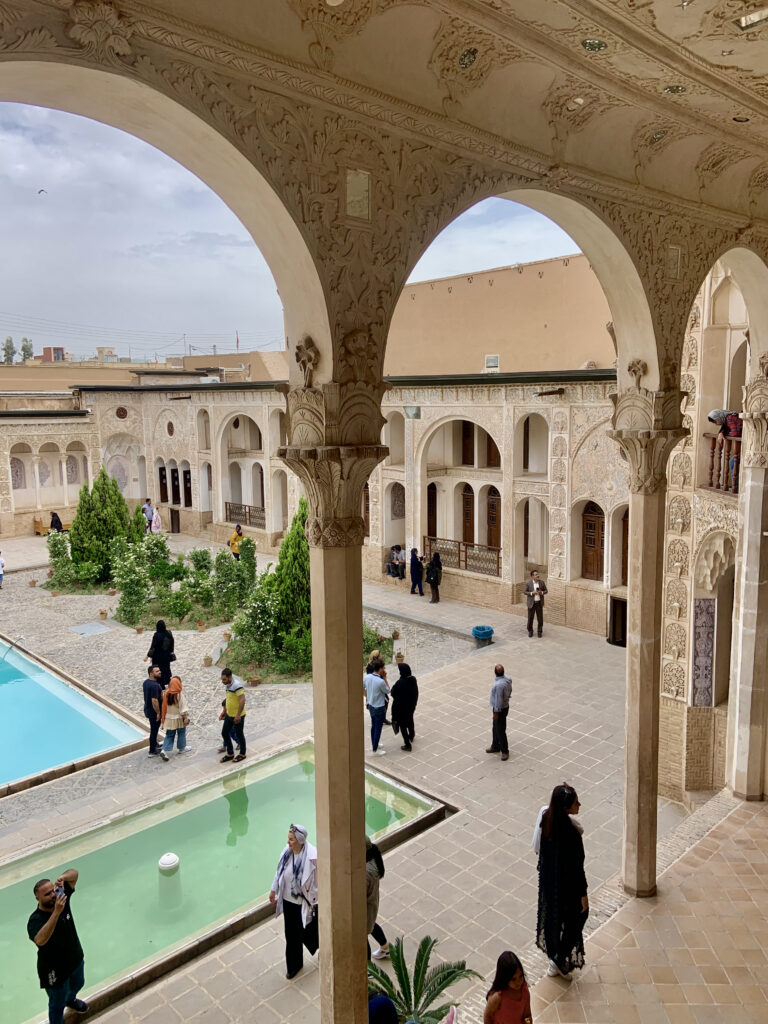

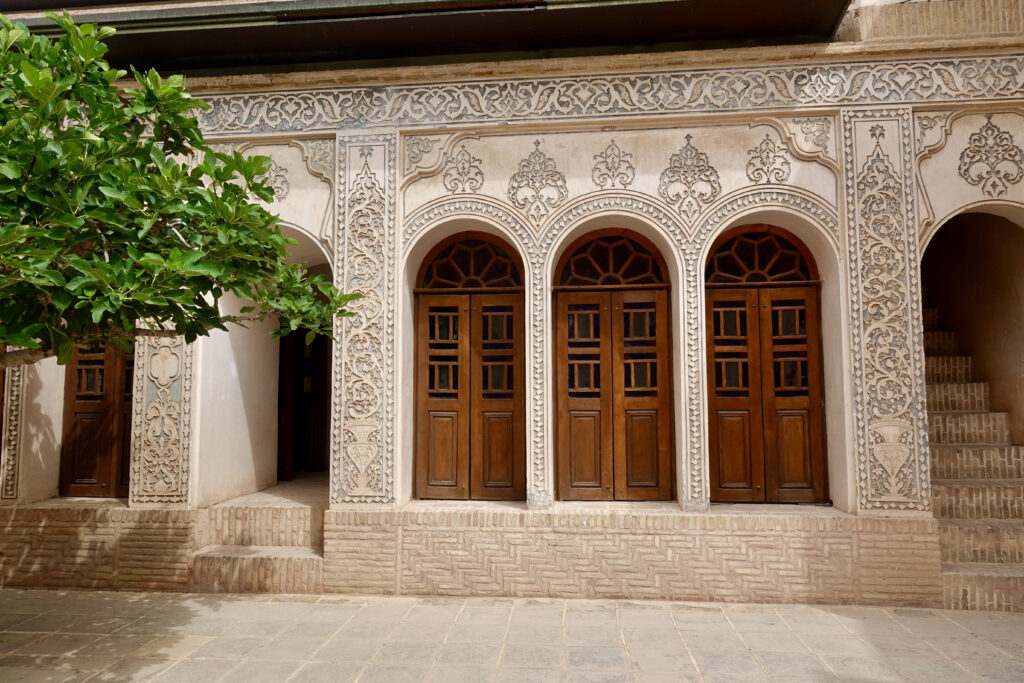
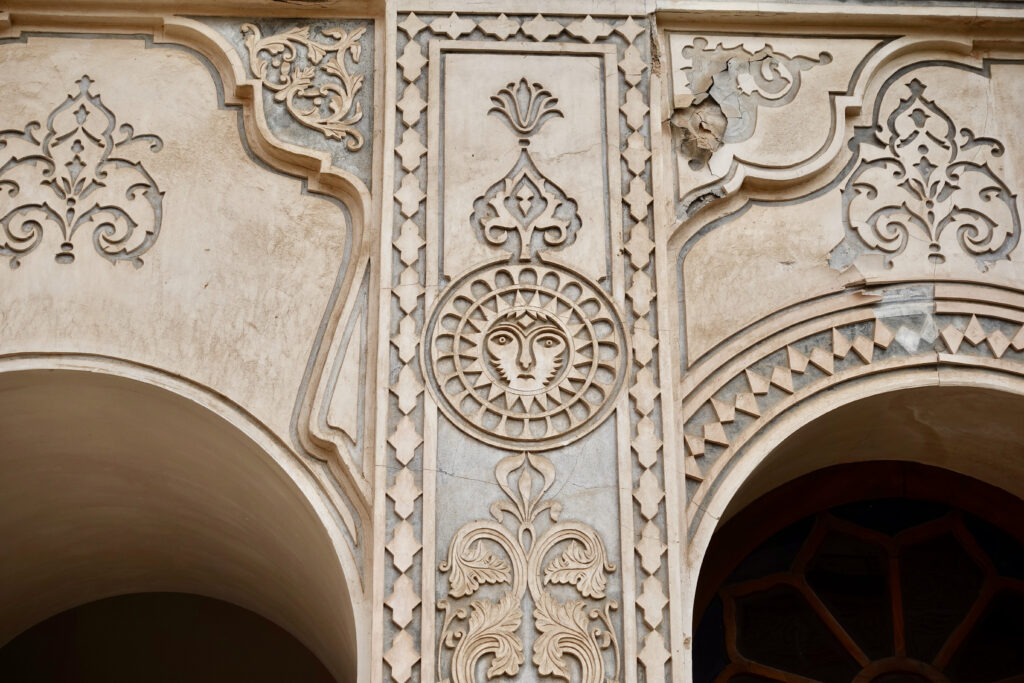
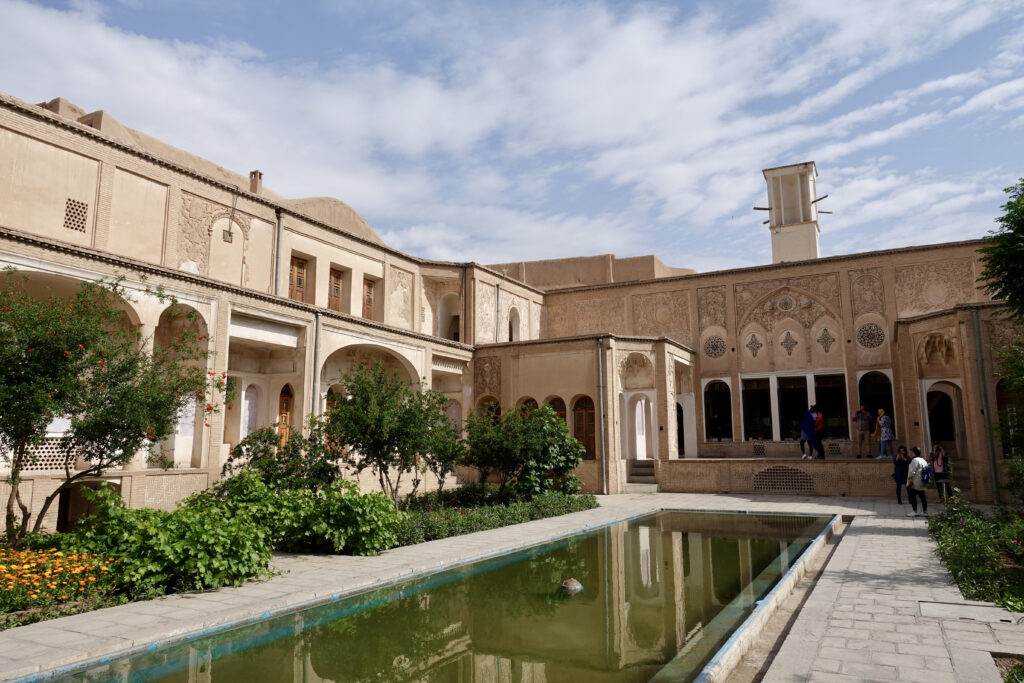
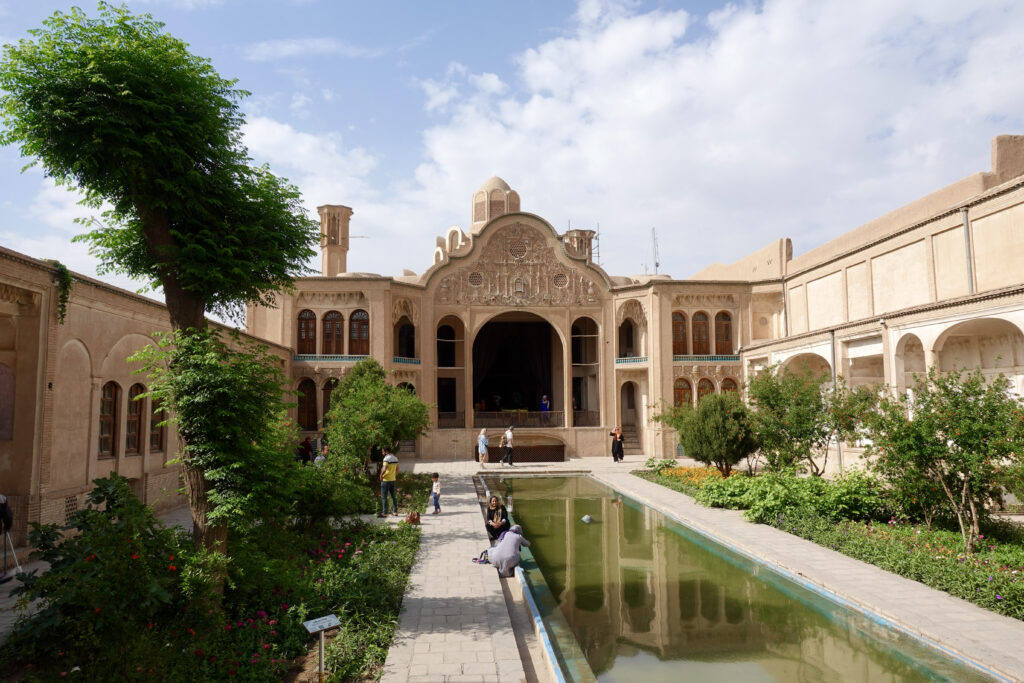
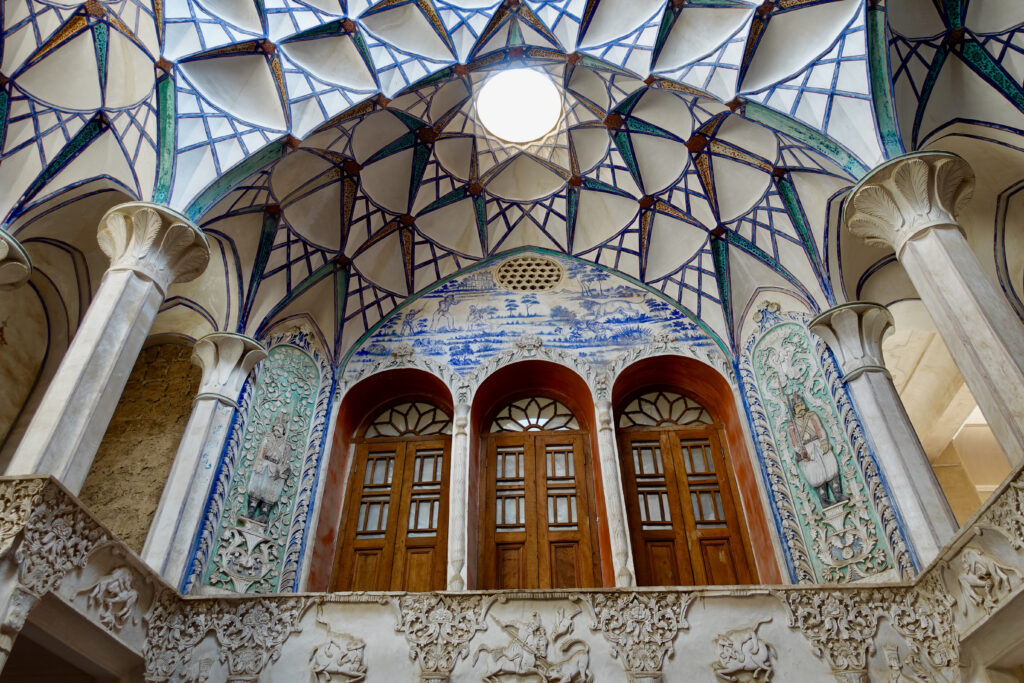
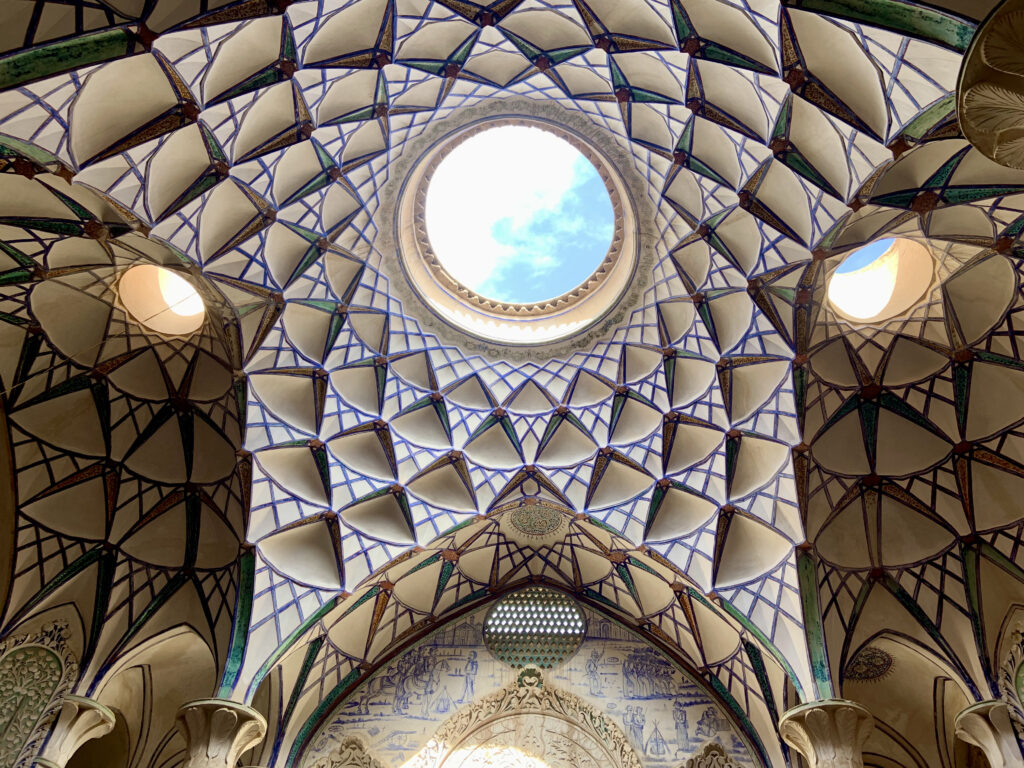
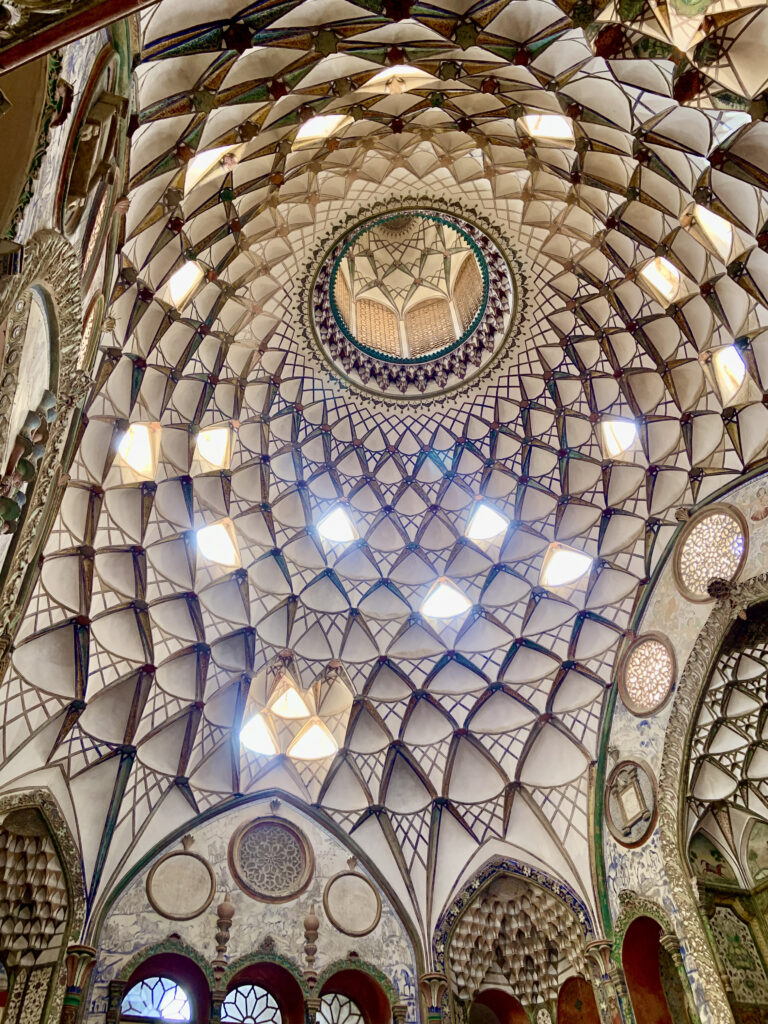
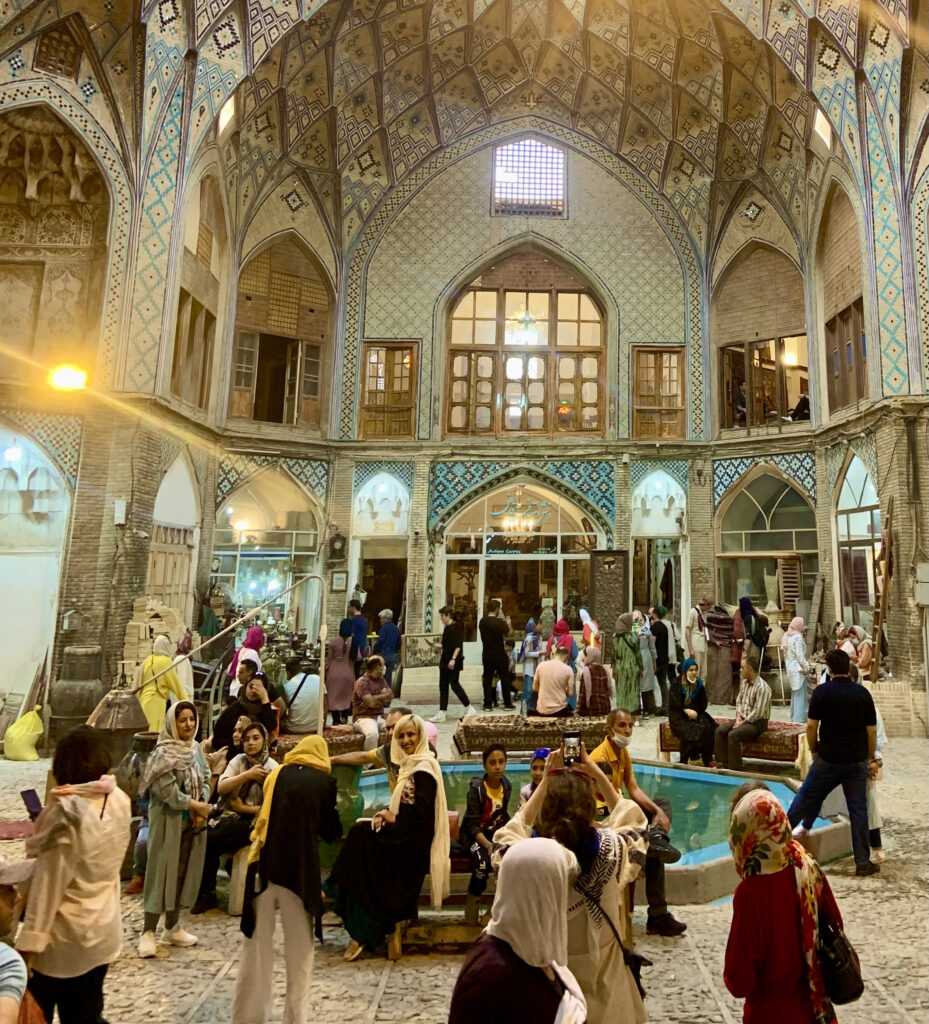
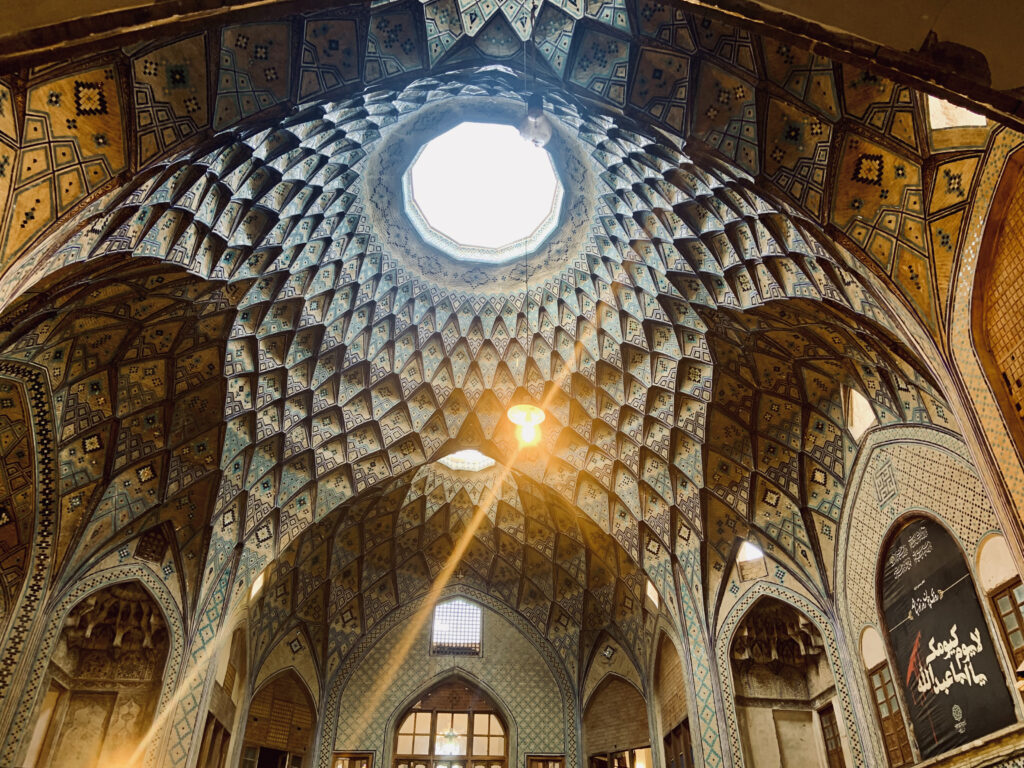
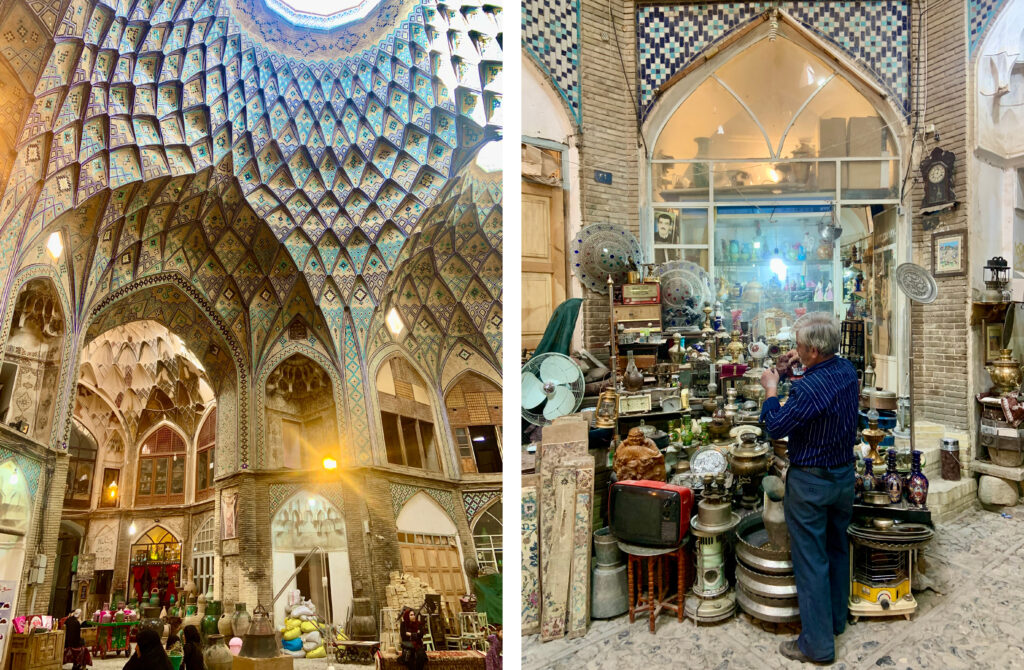


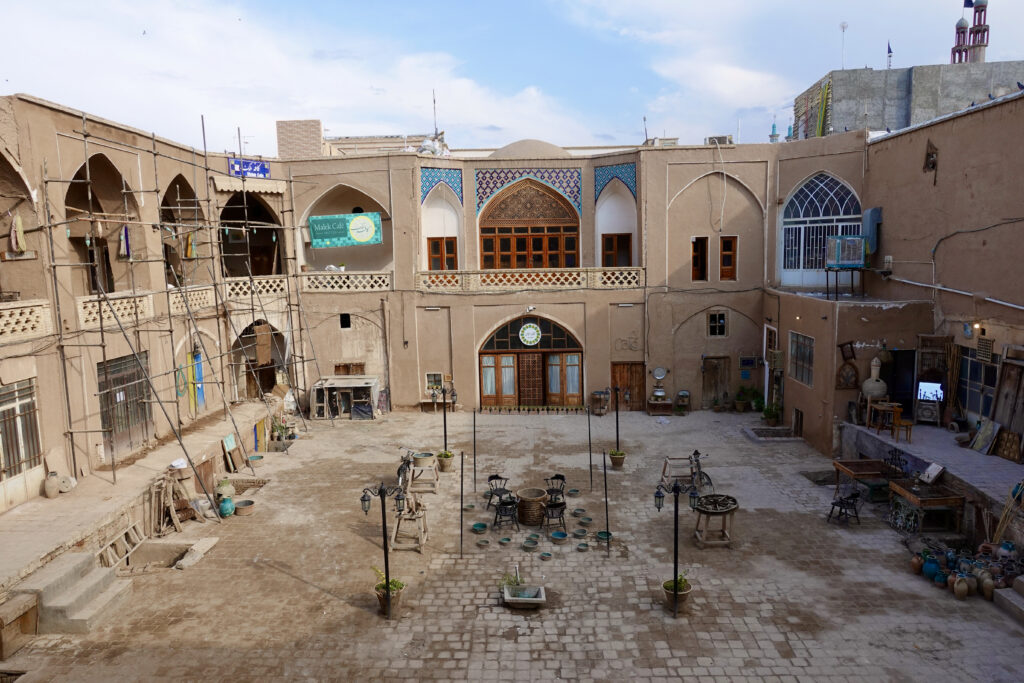
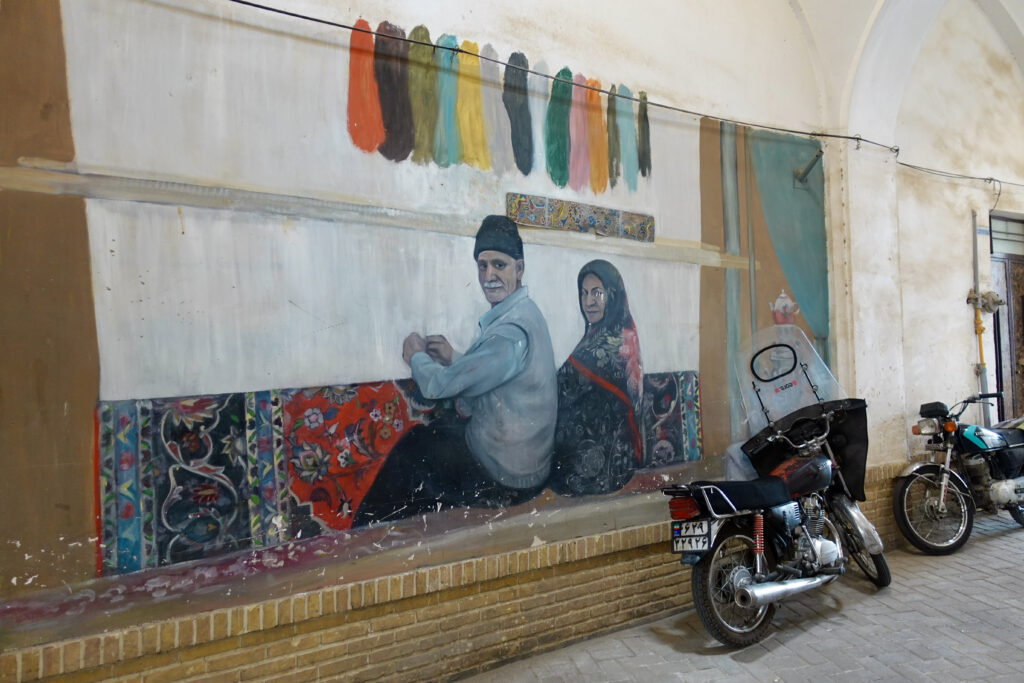
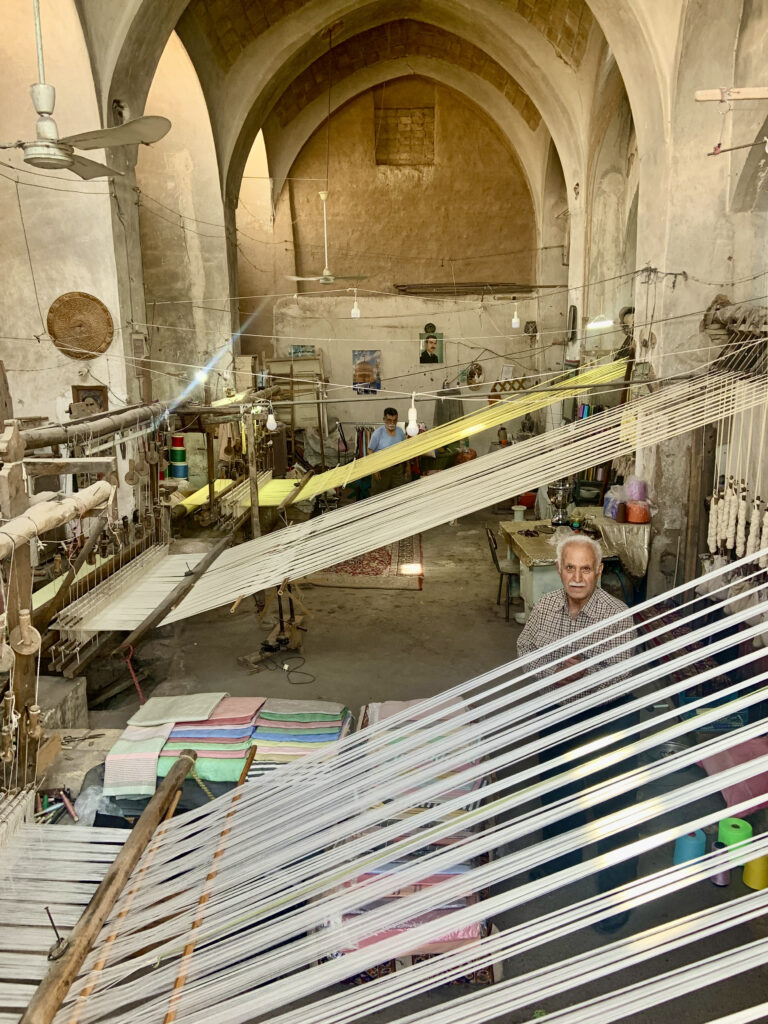
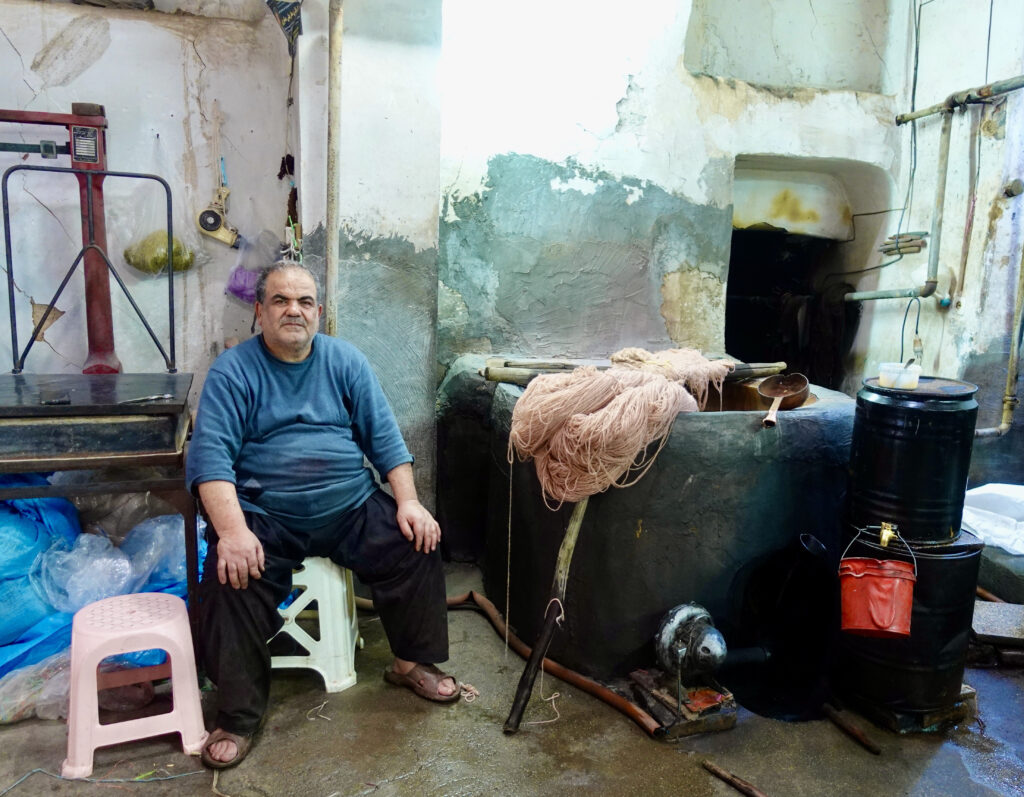
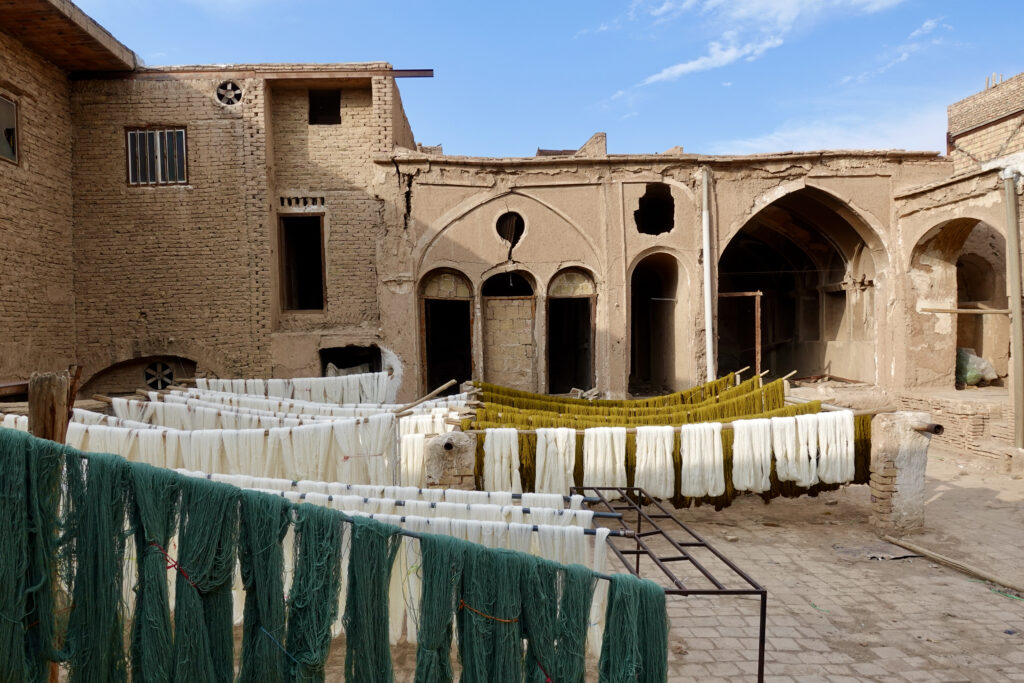

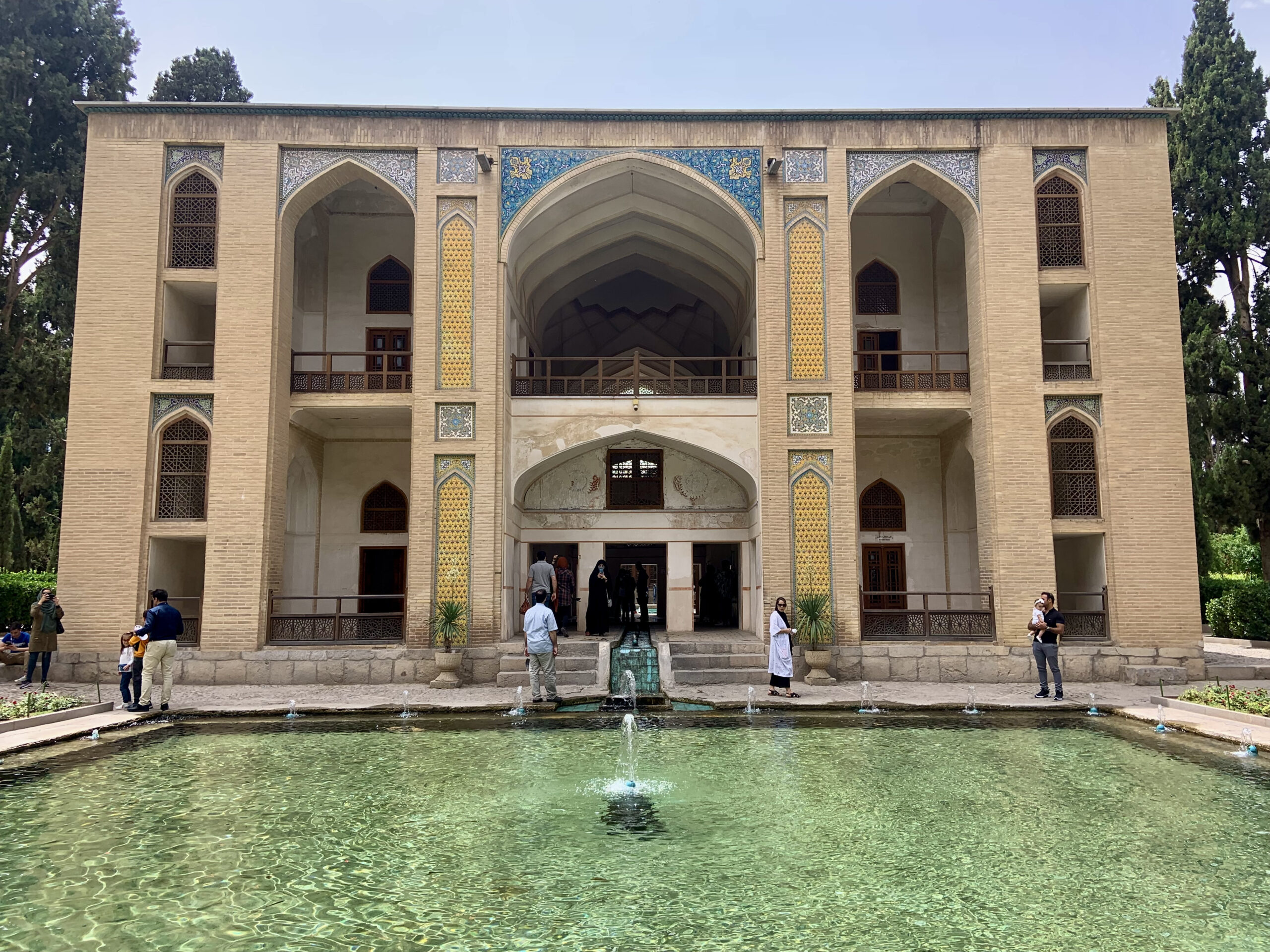
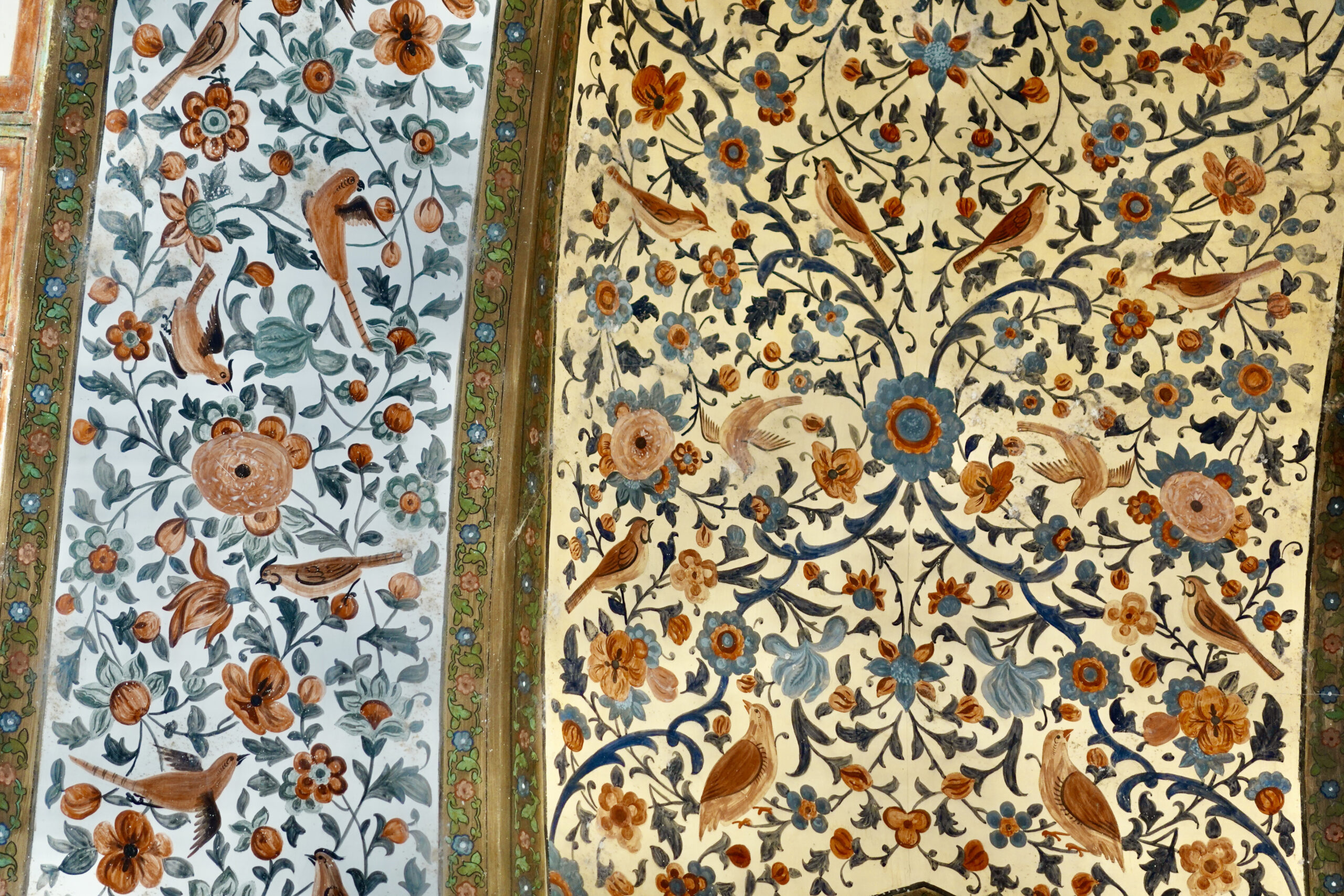
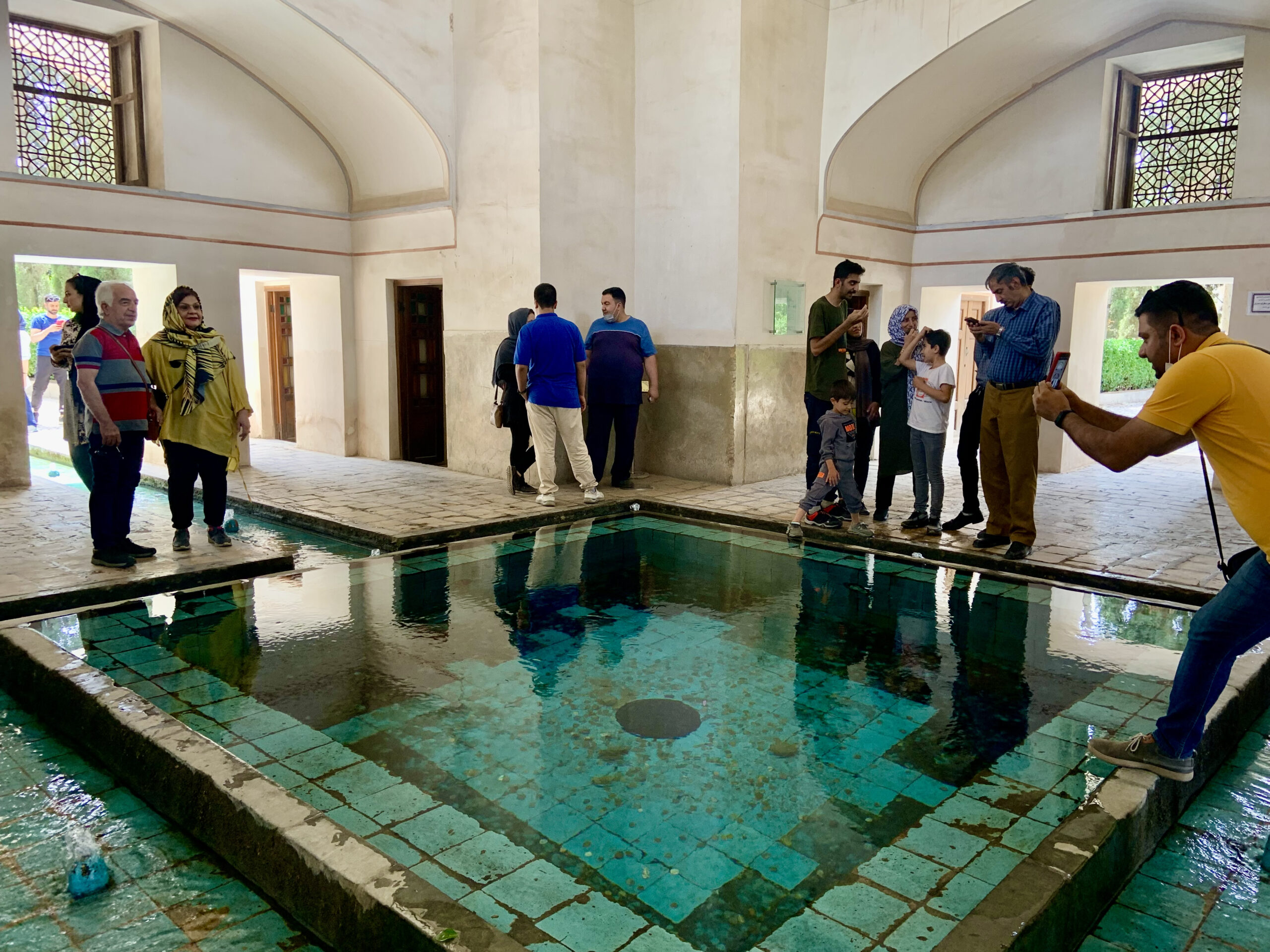
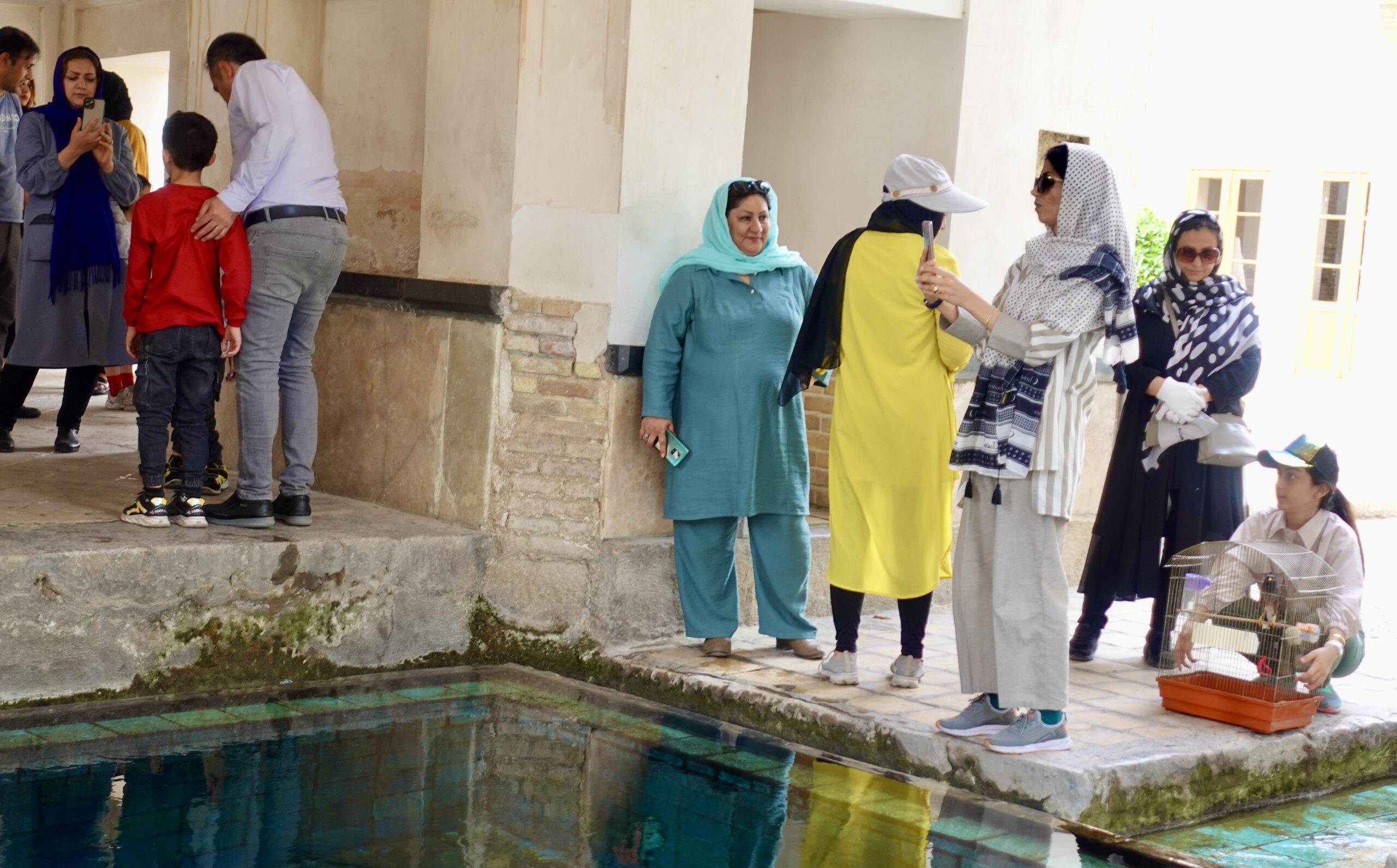

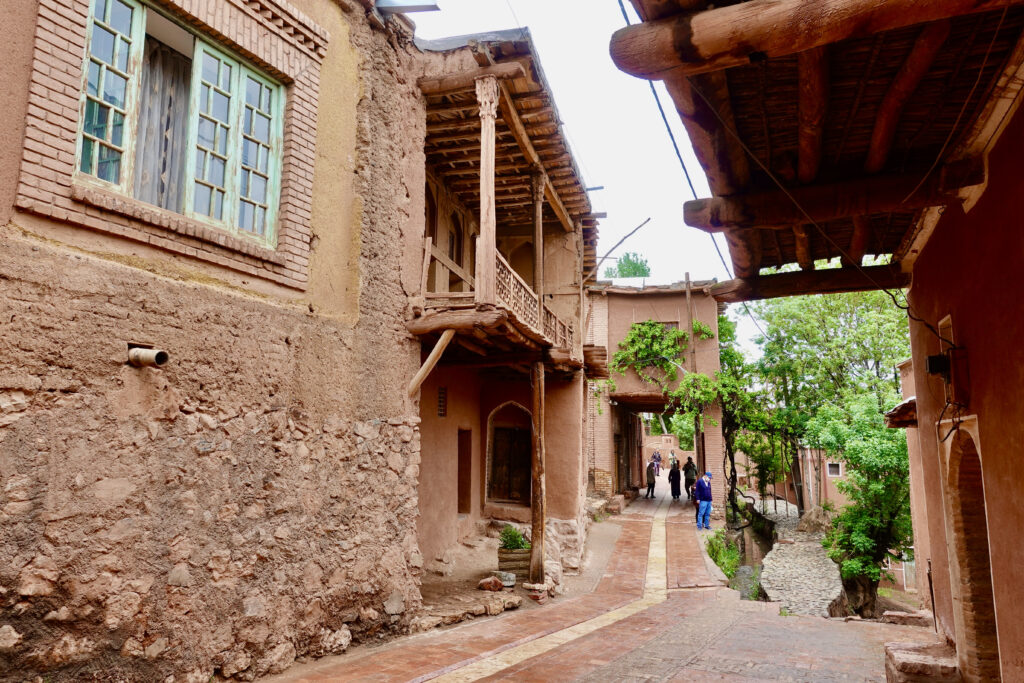
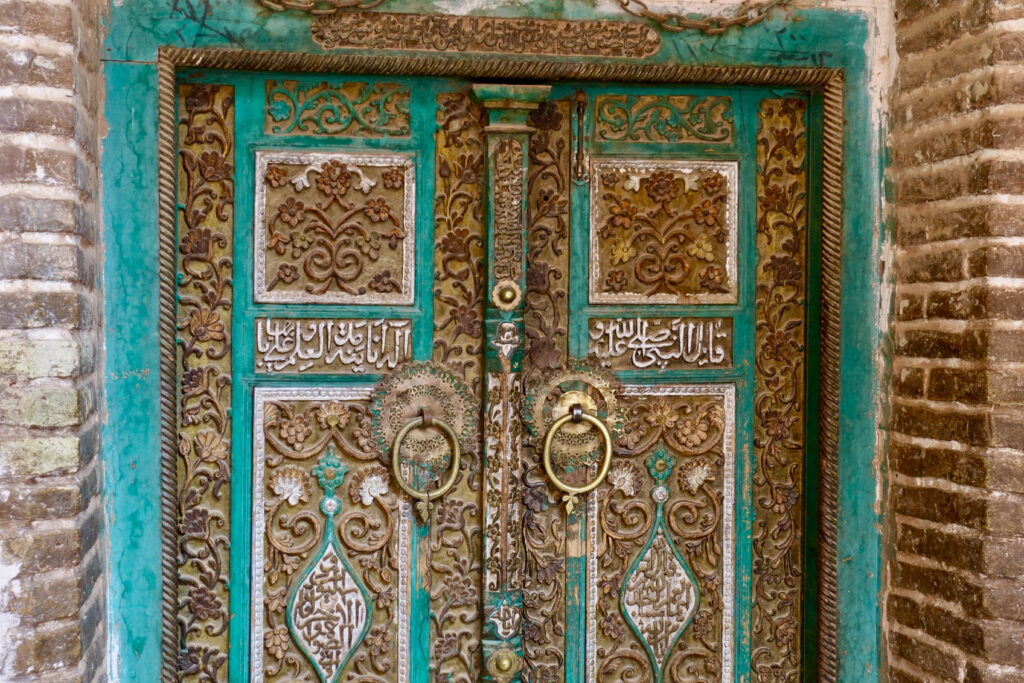
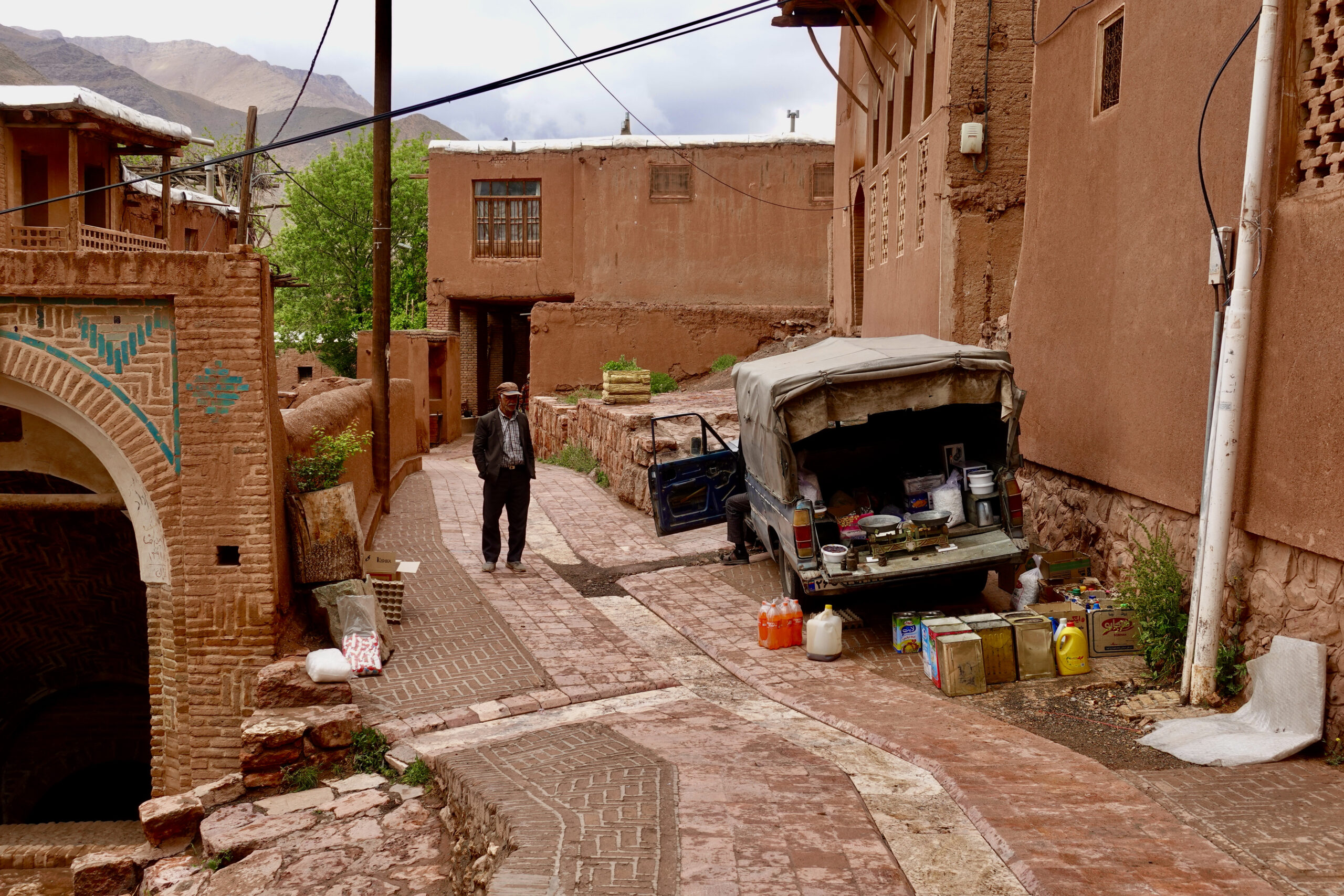
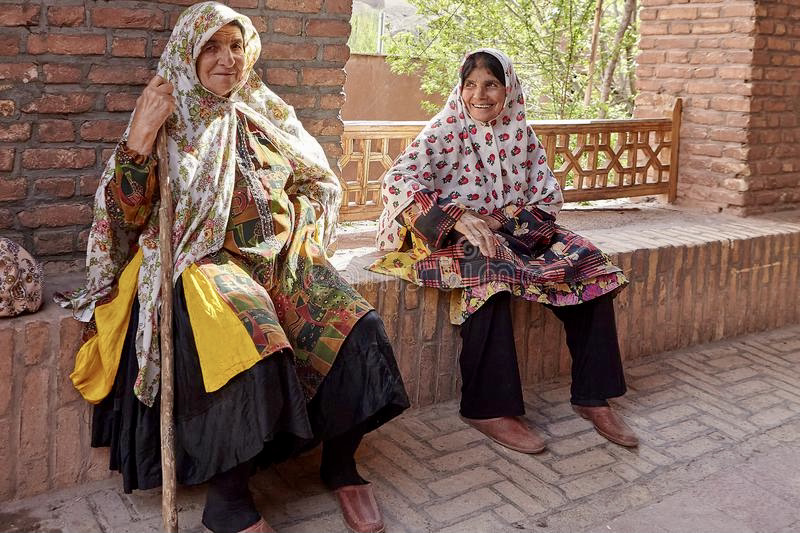
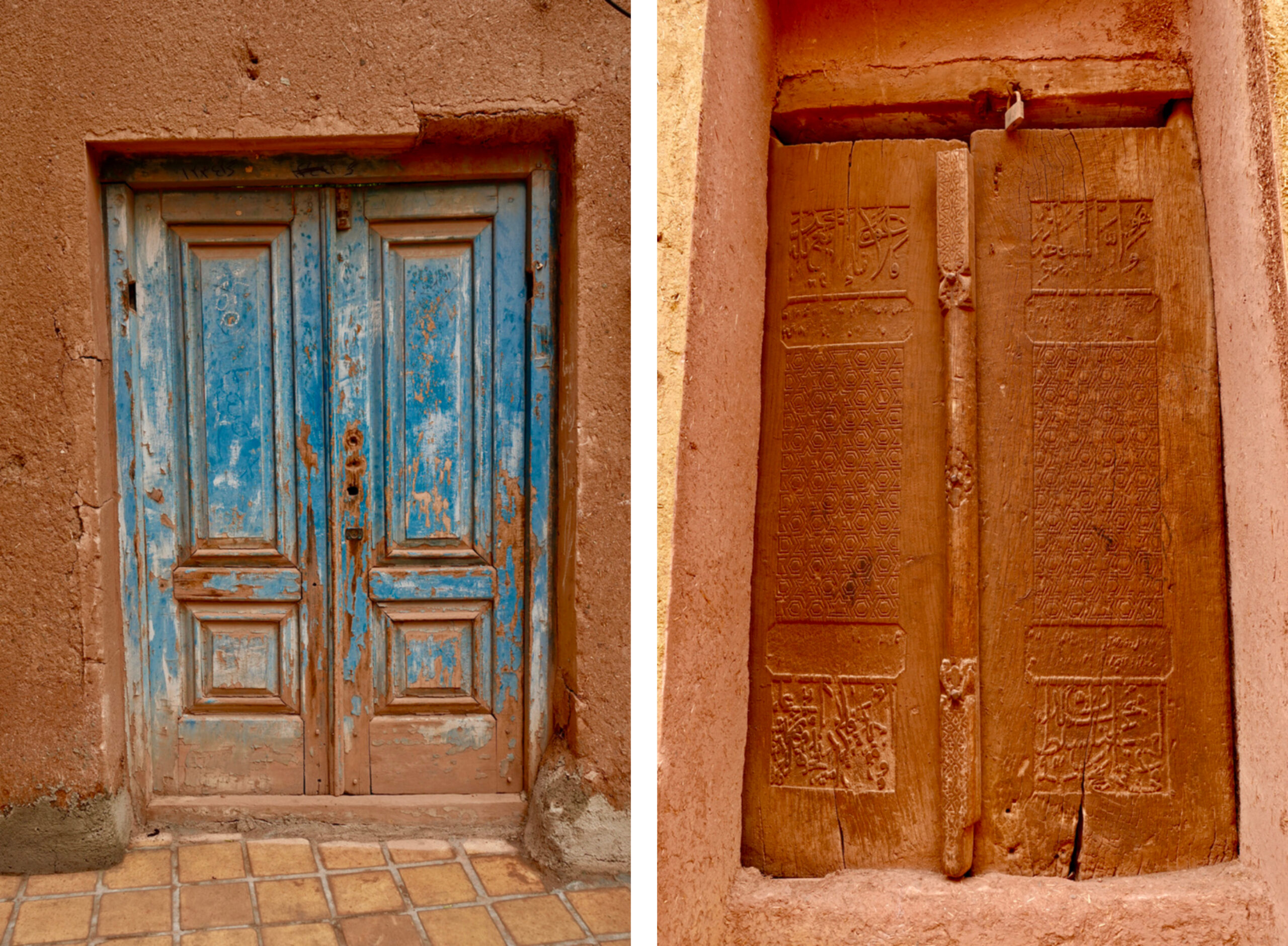
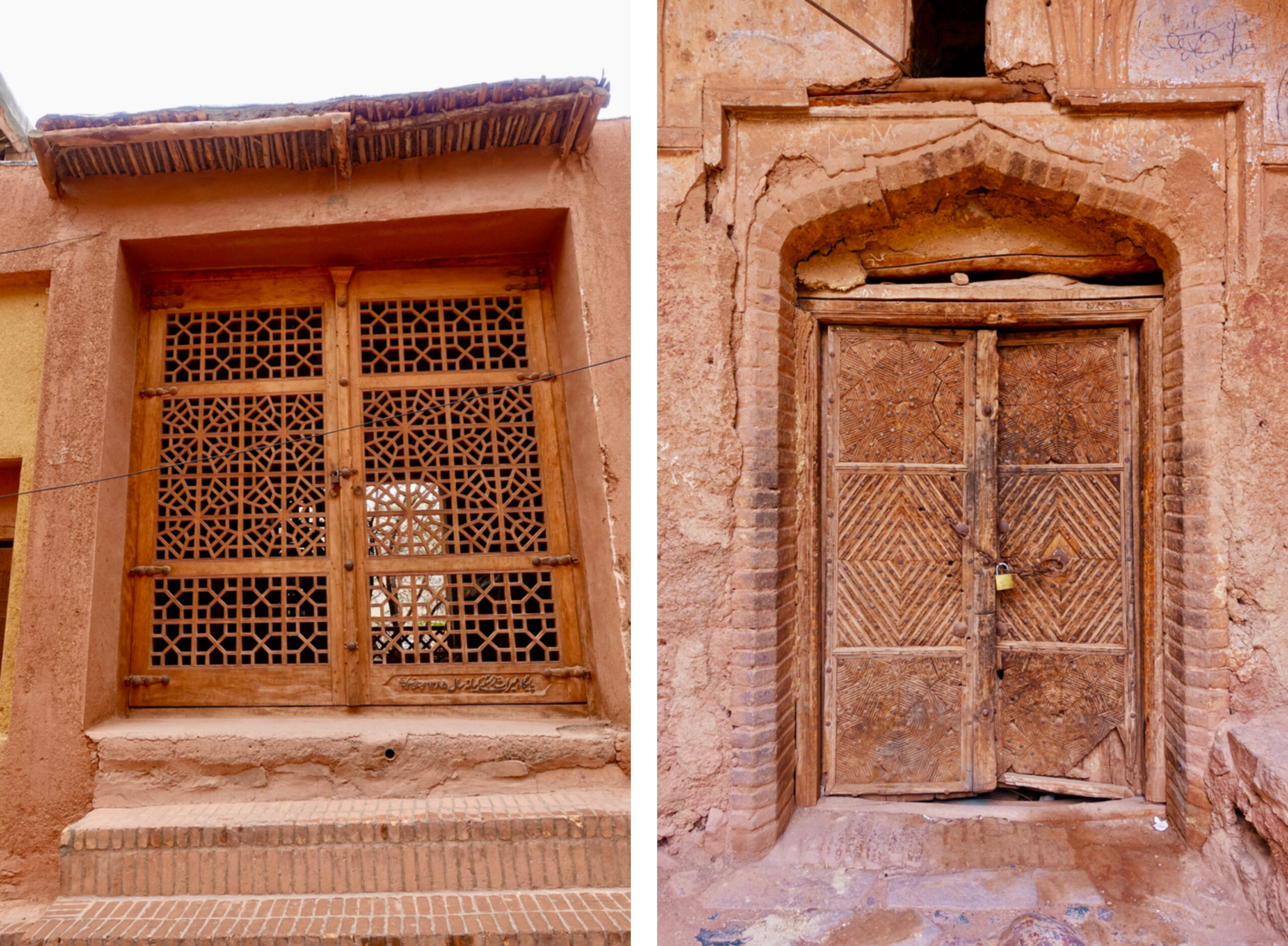
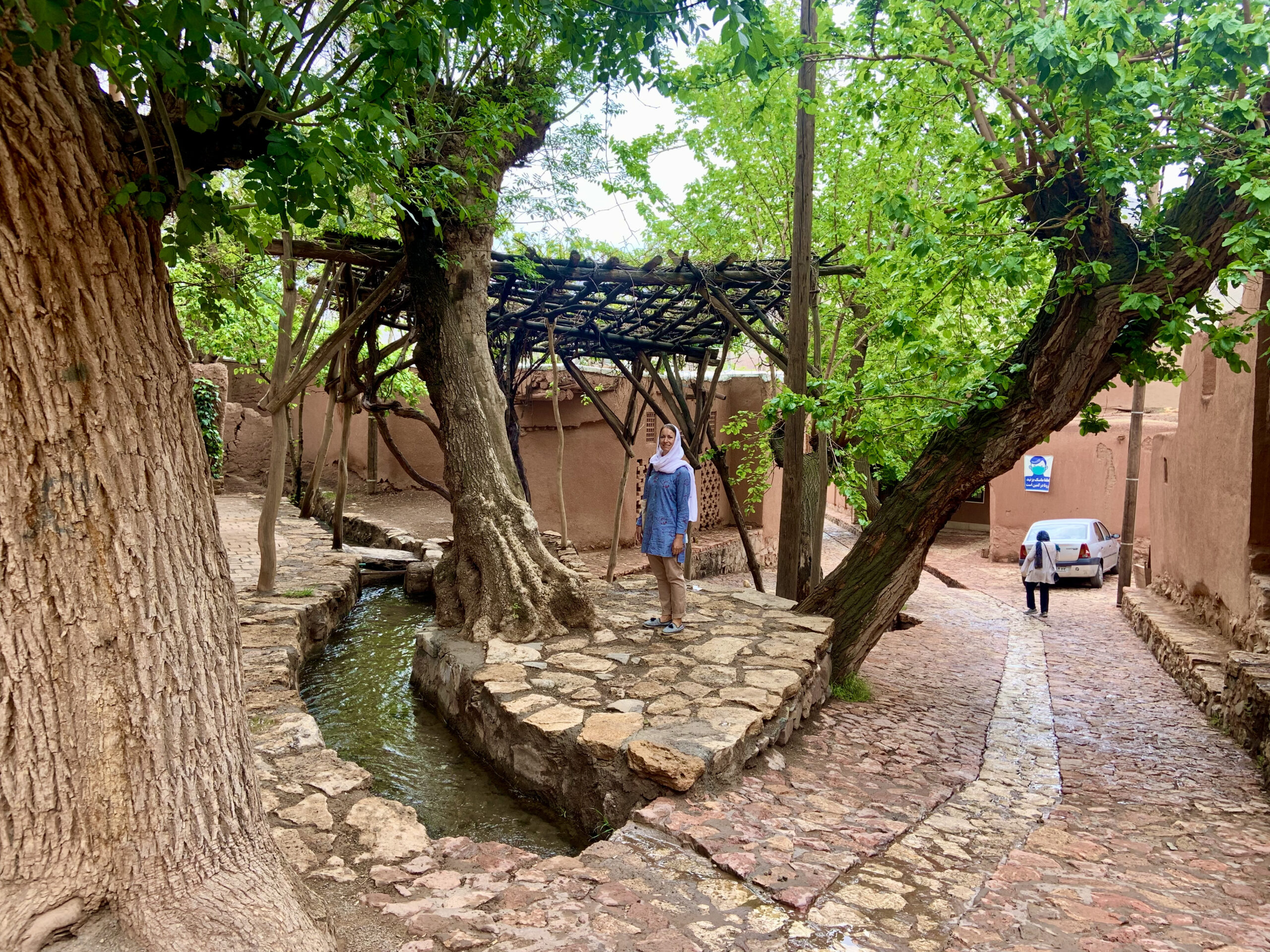
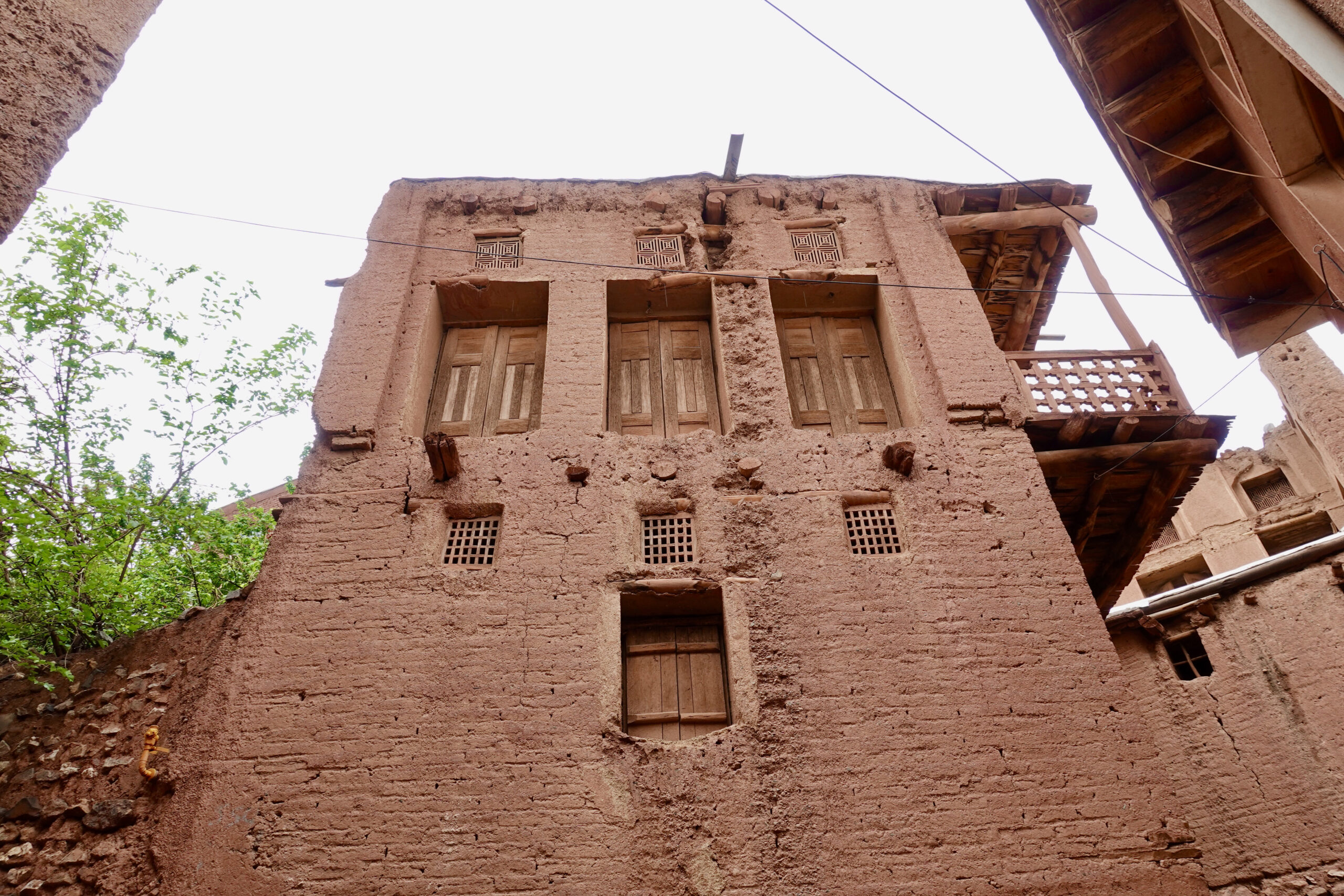
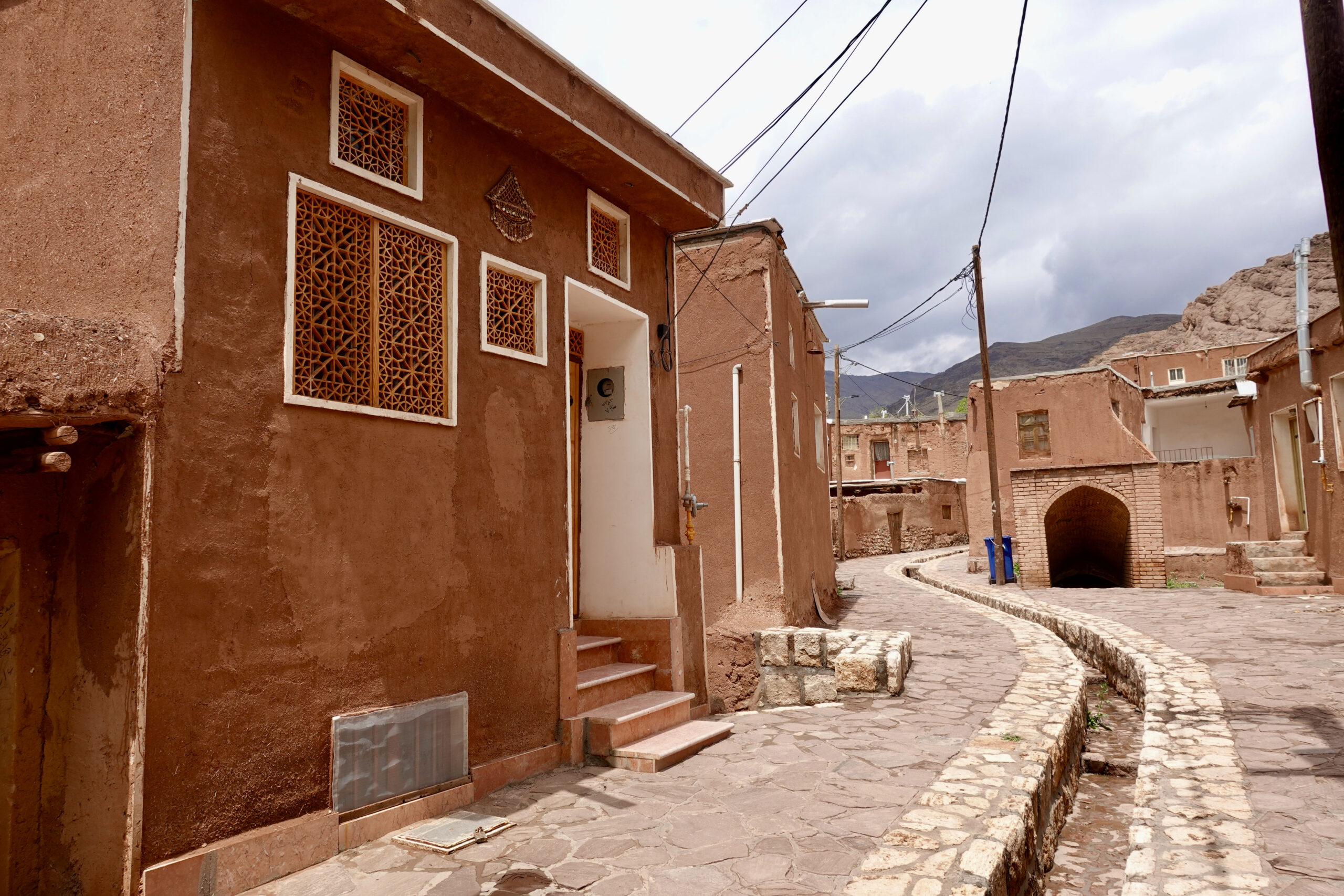
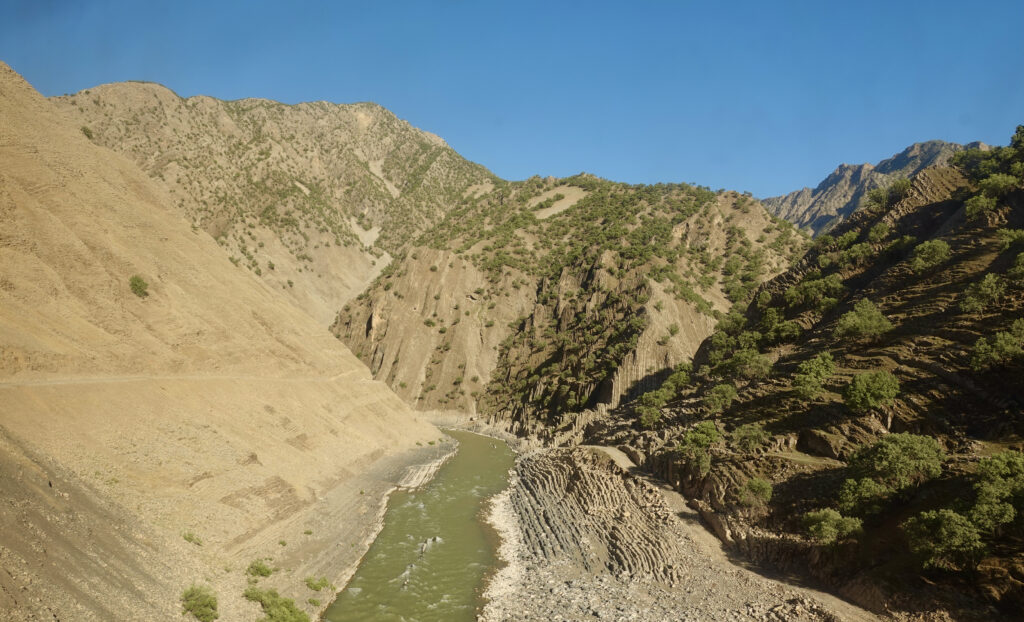
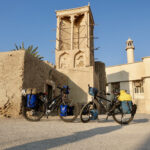
Leave a Reply